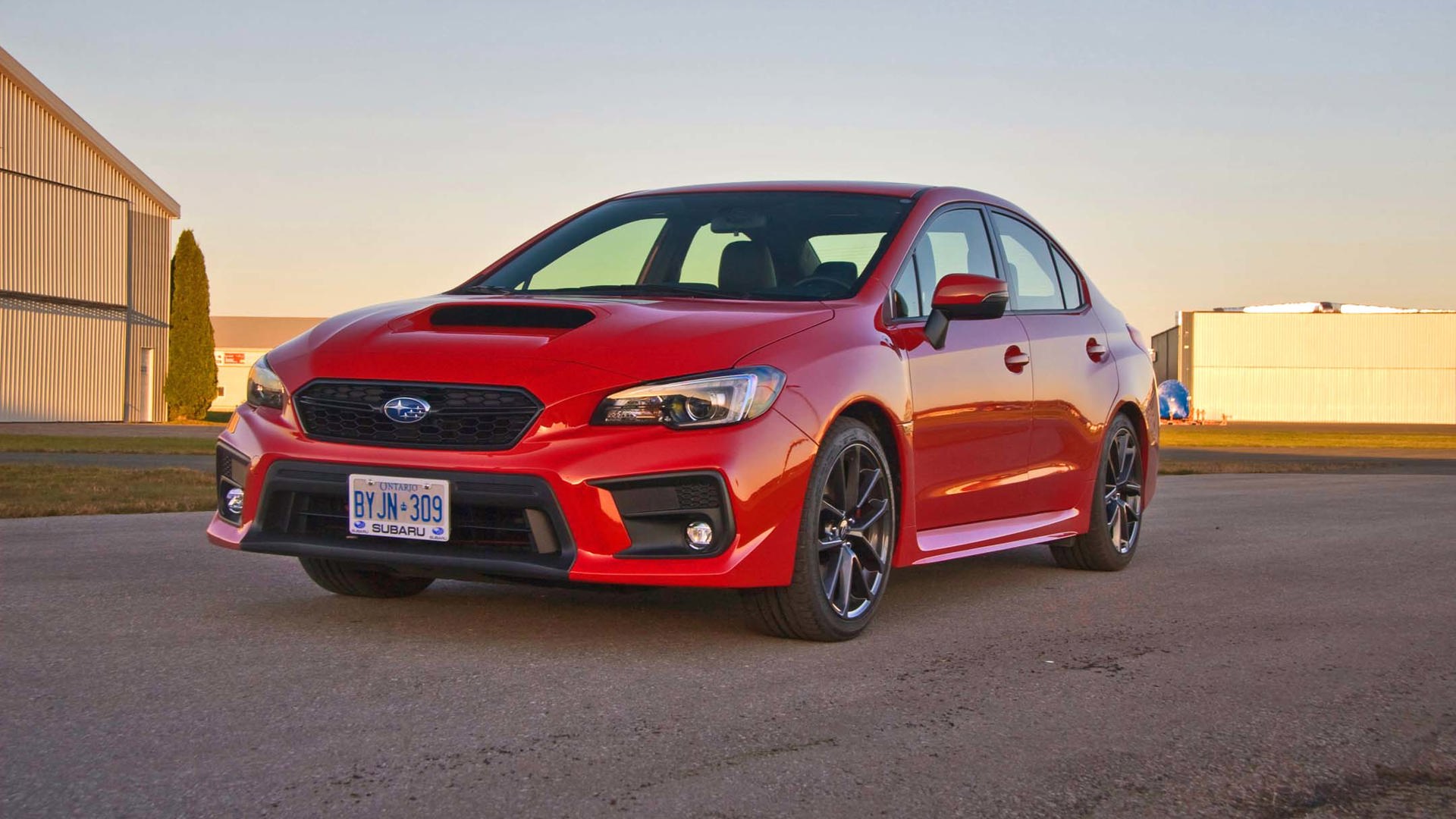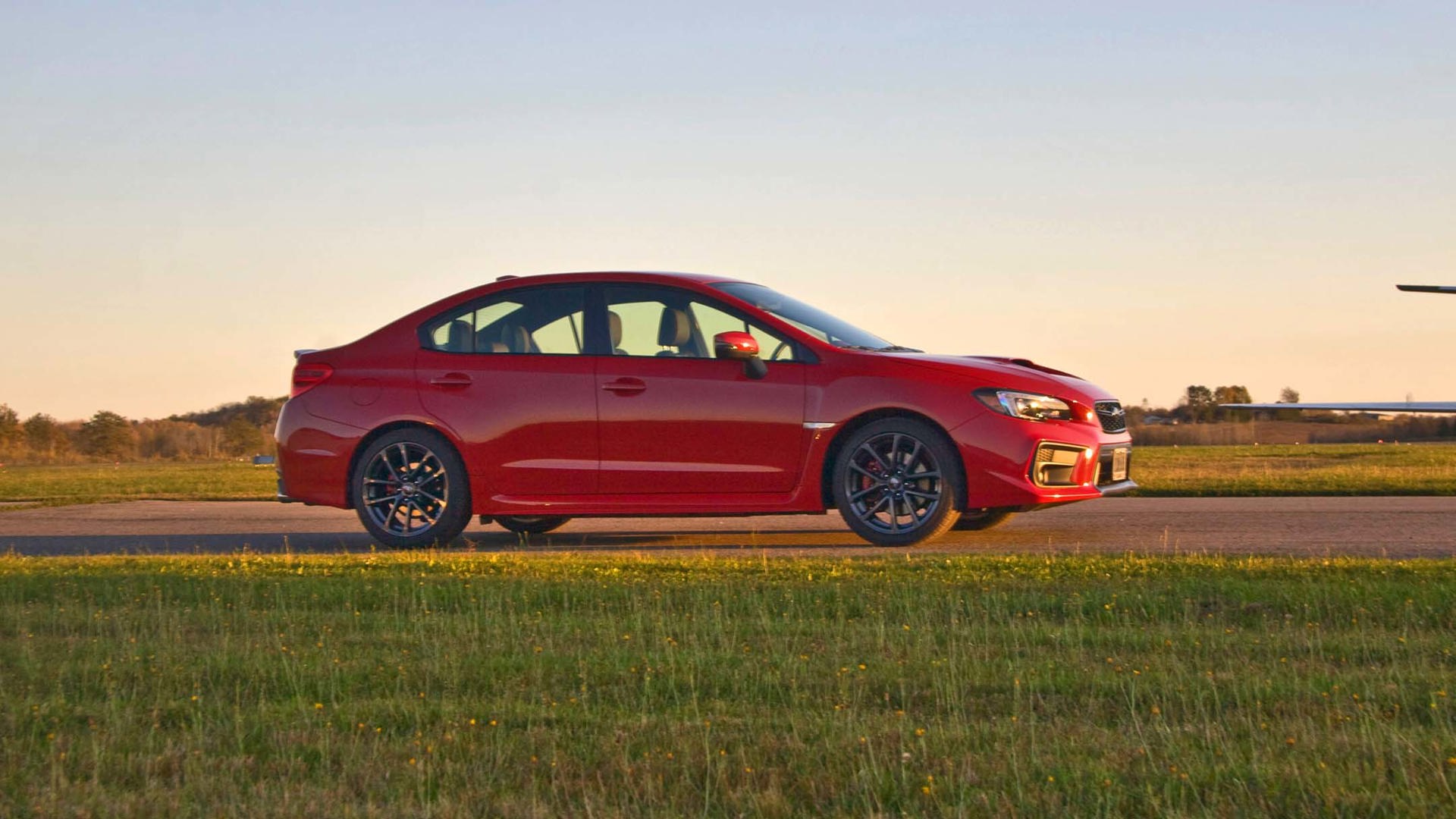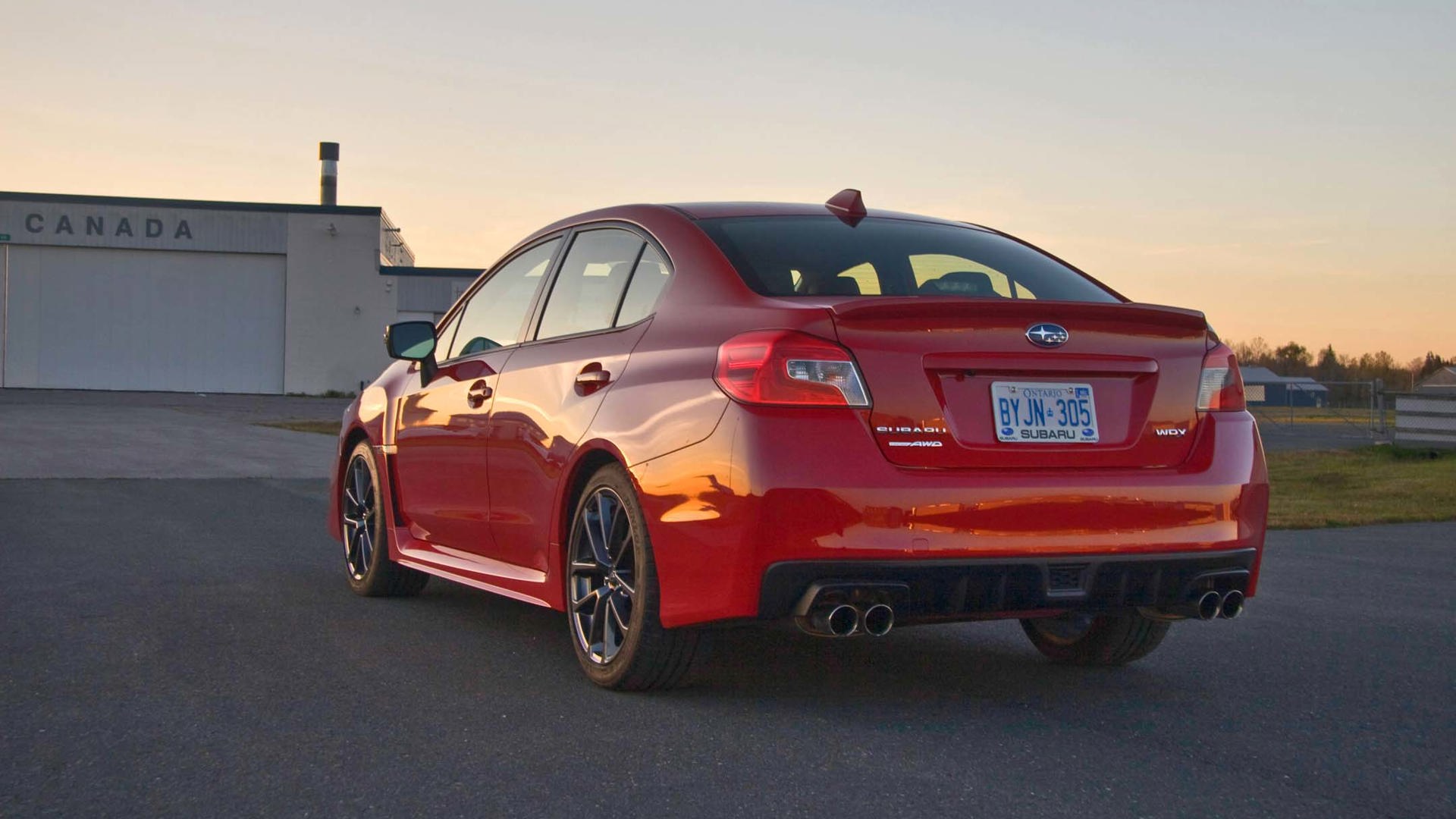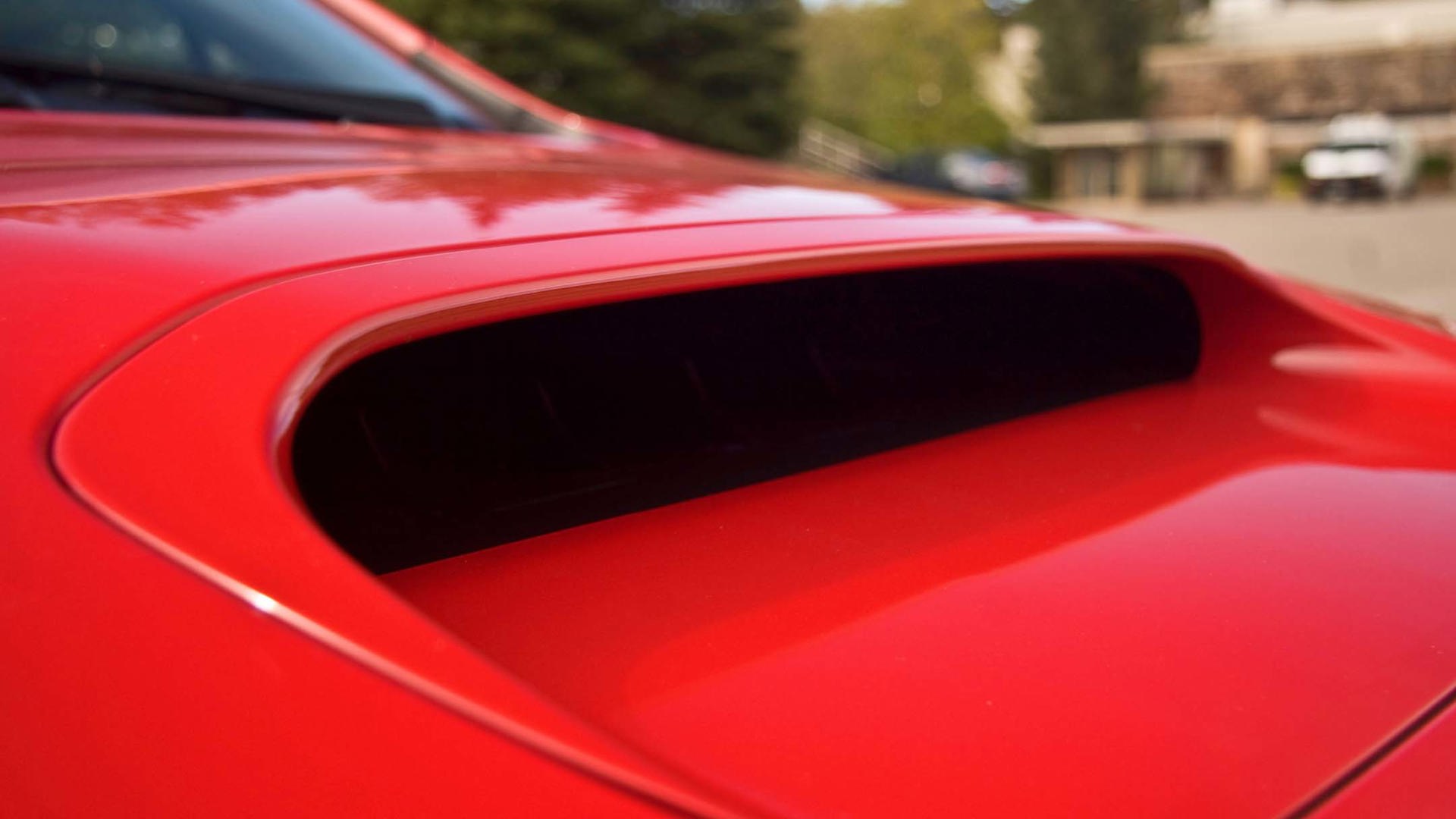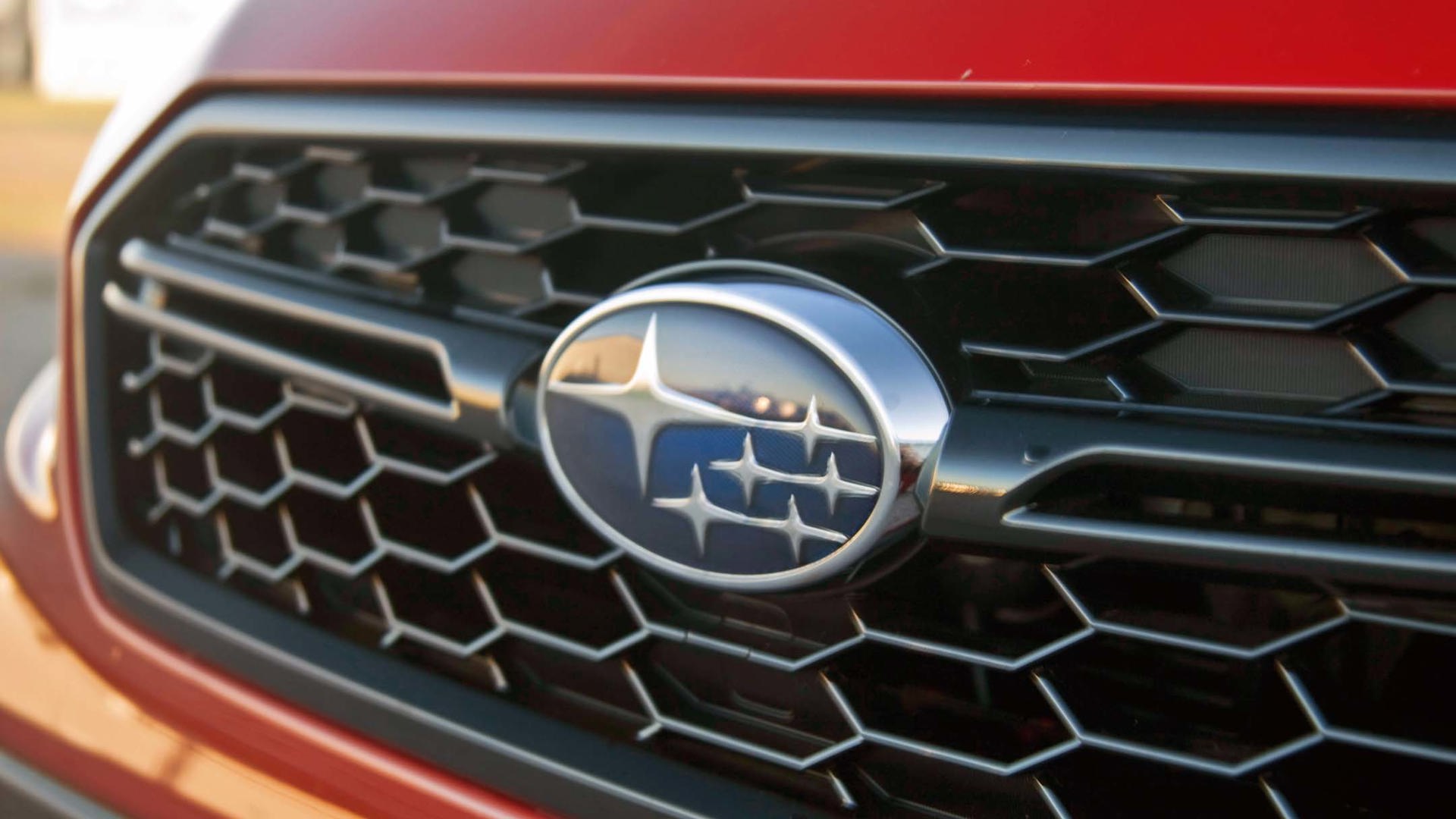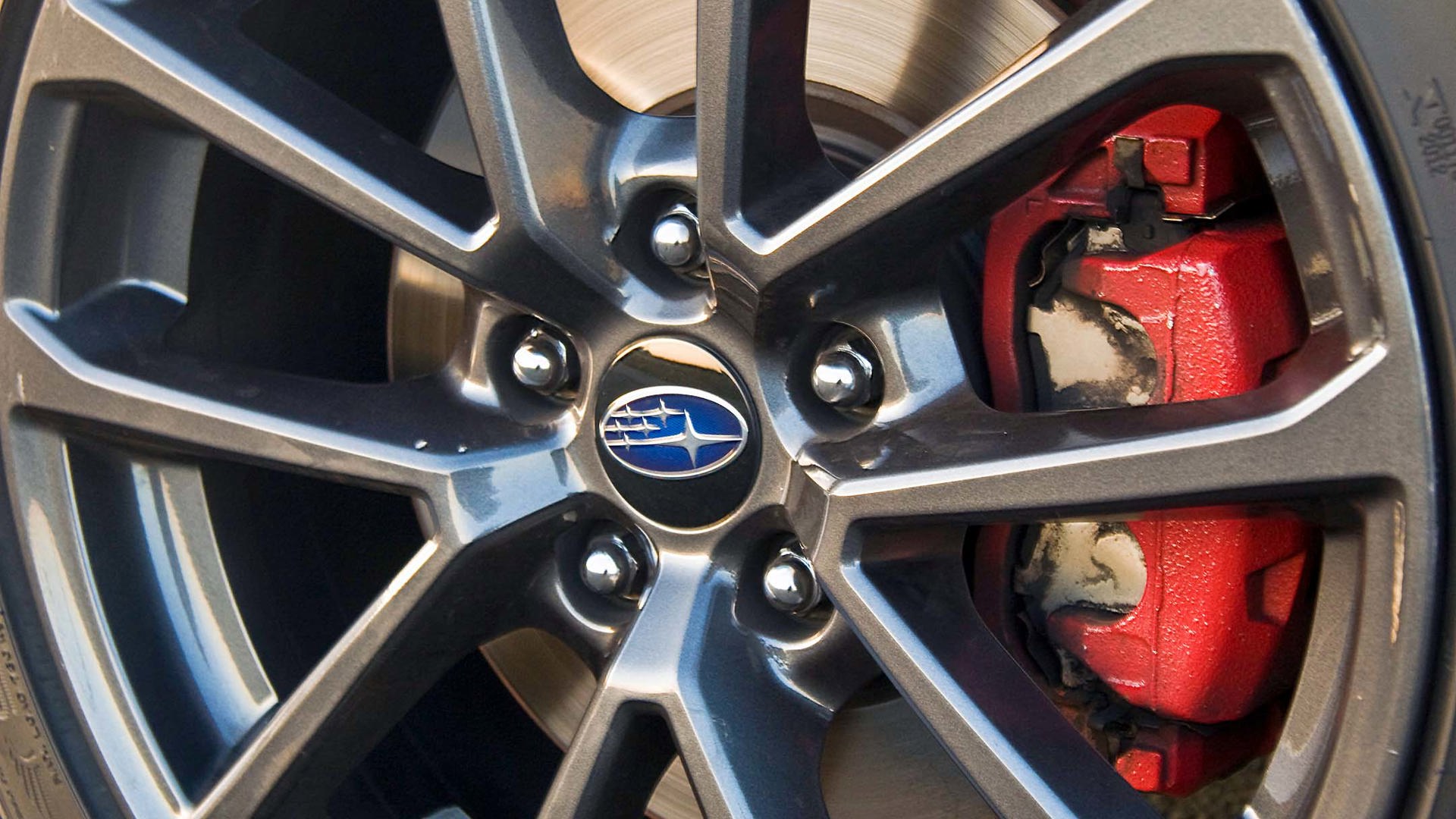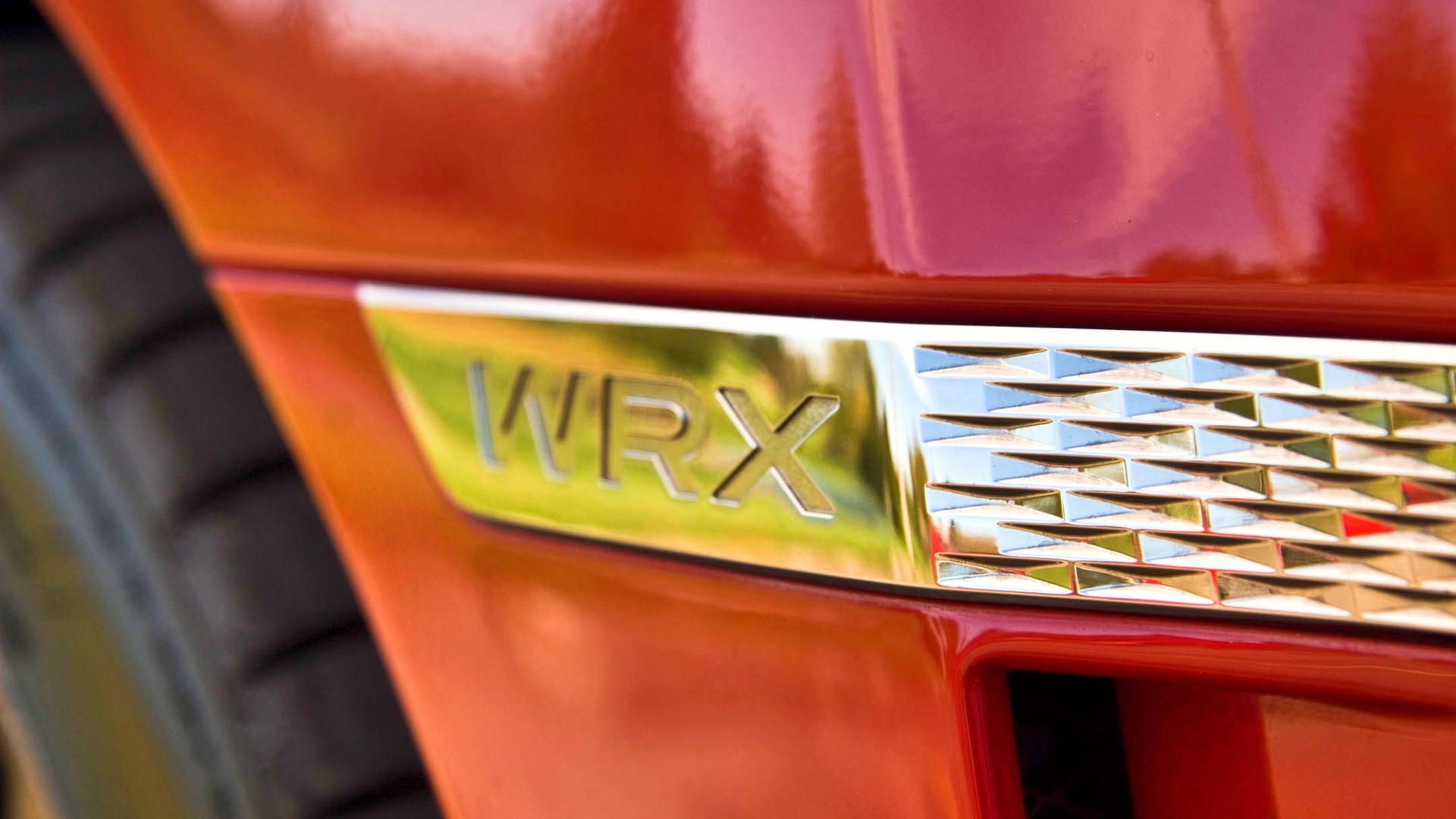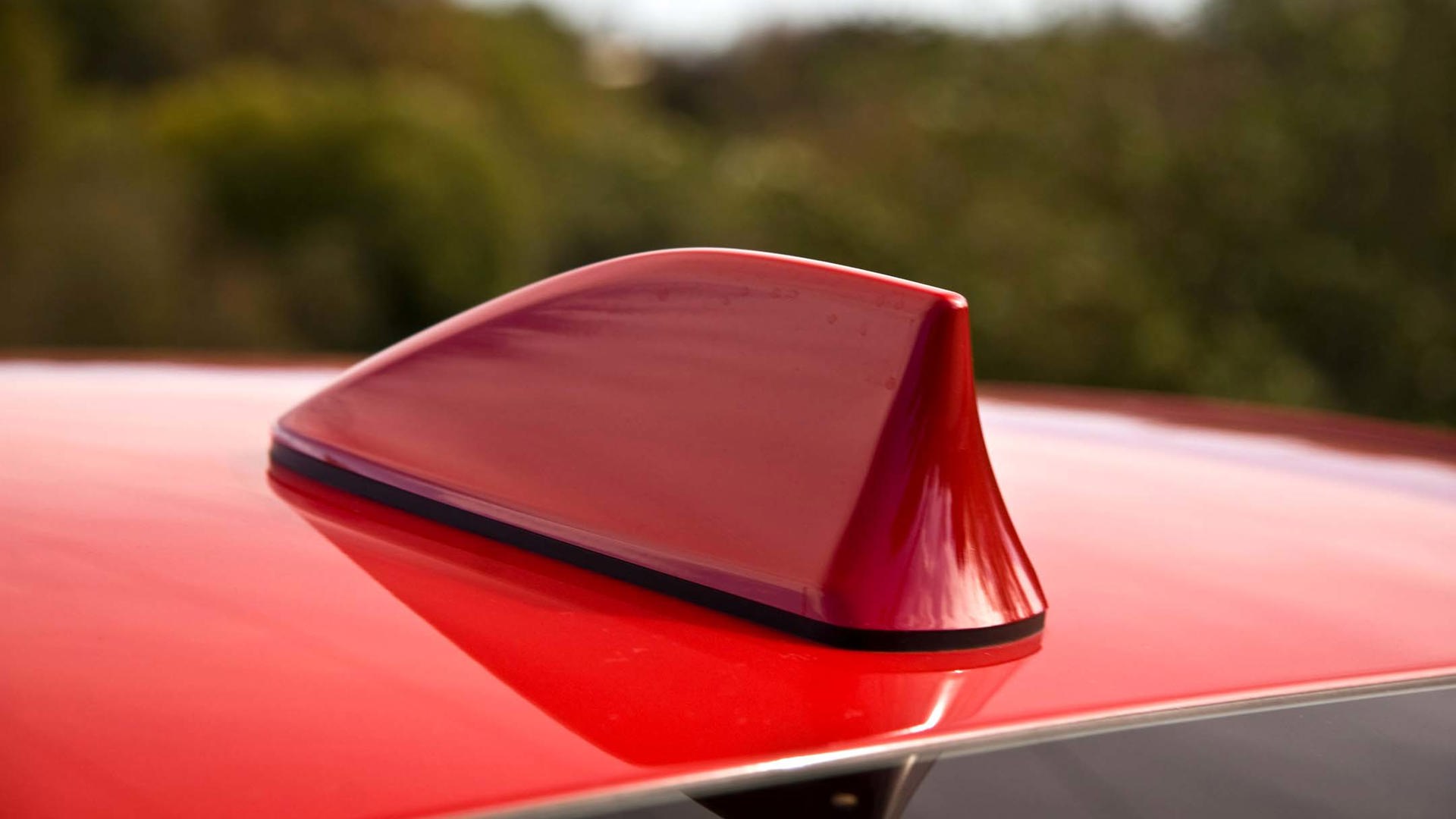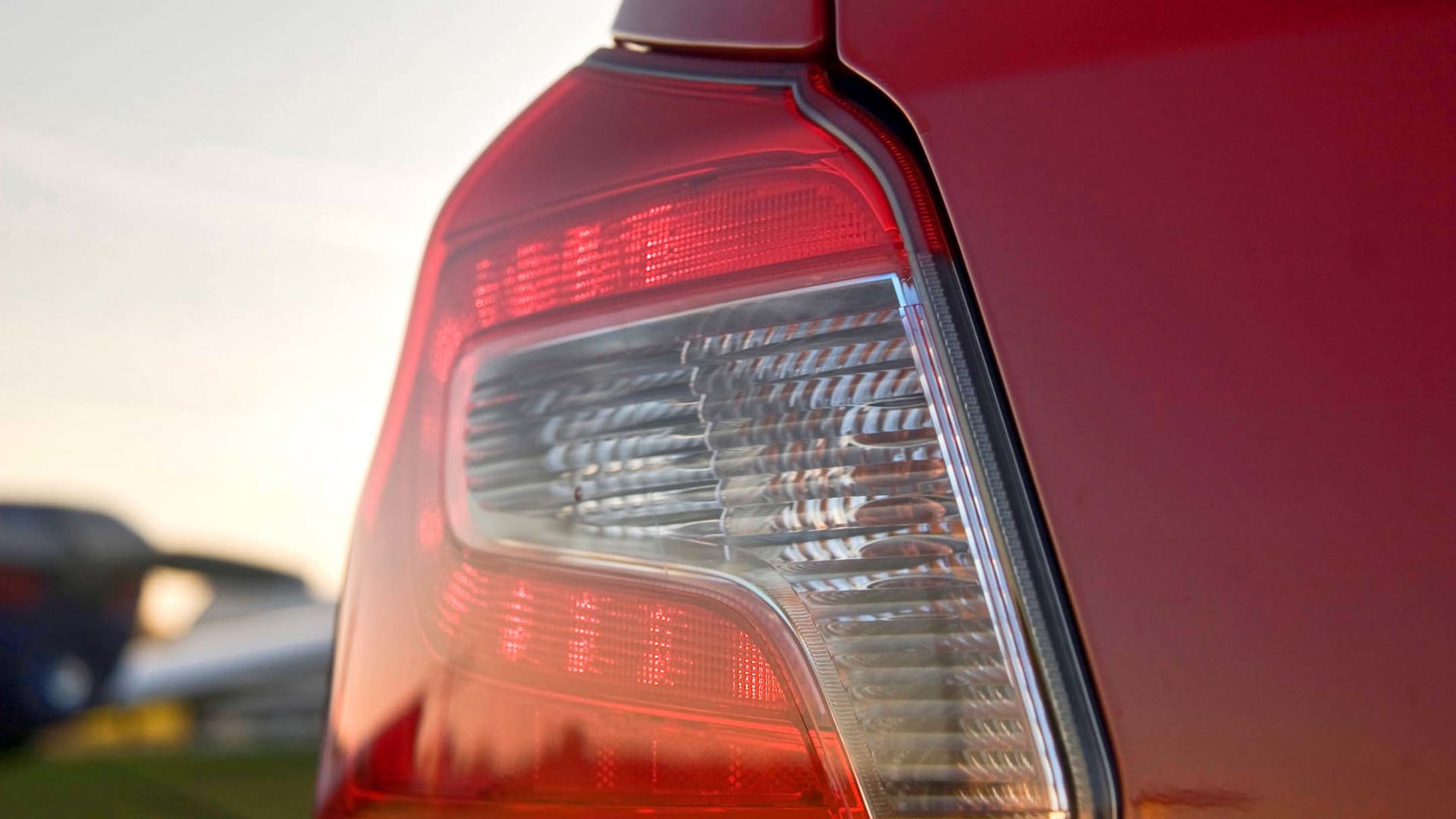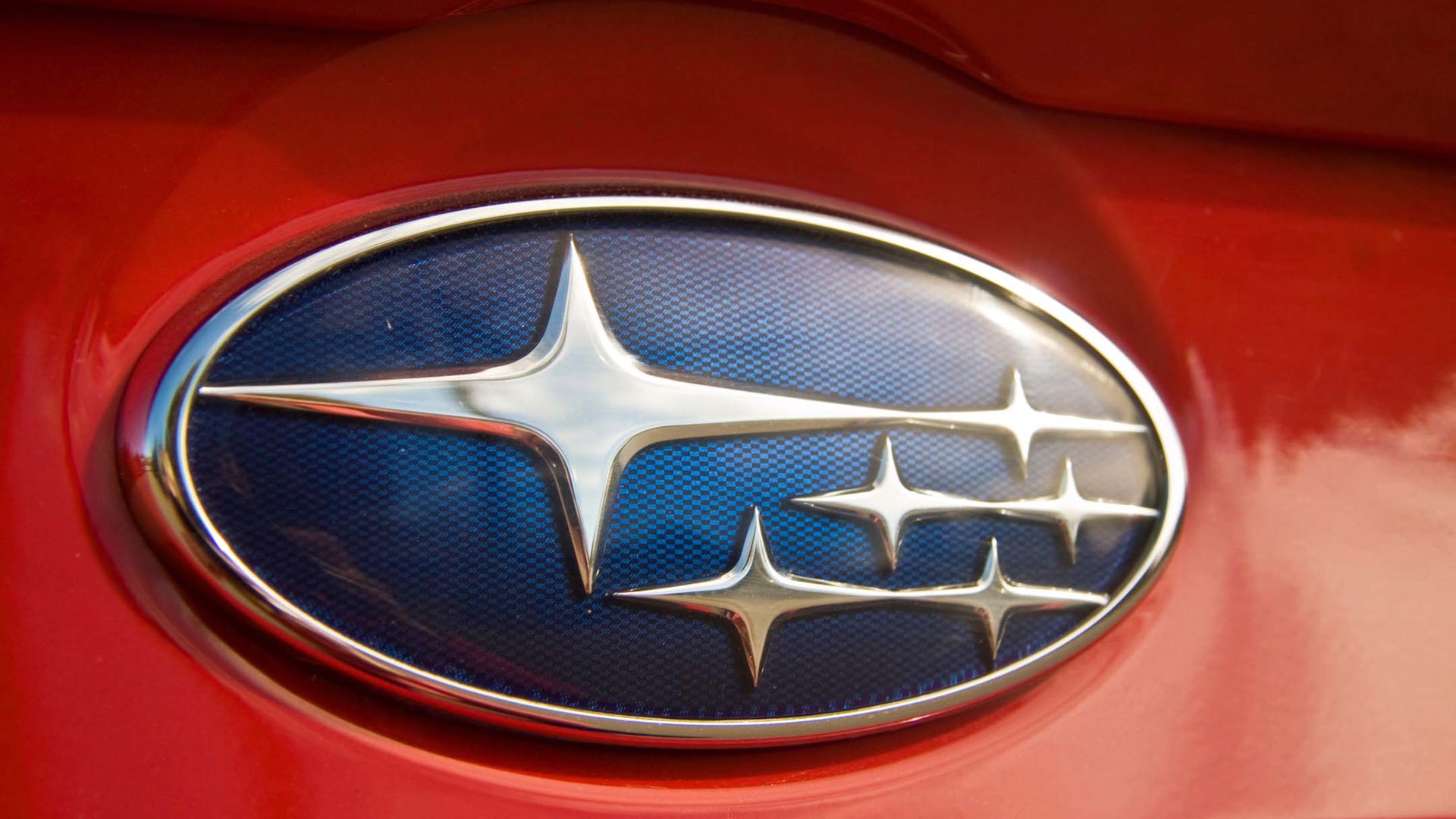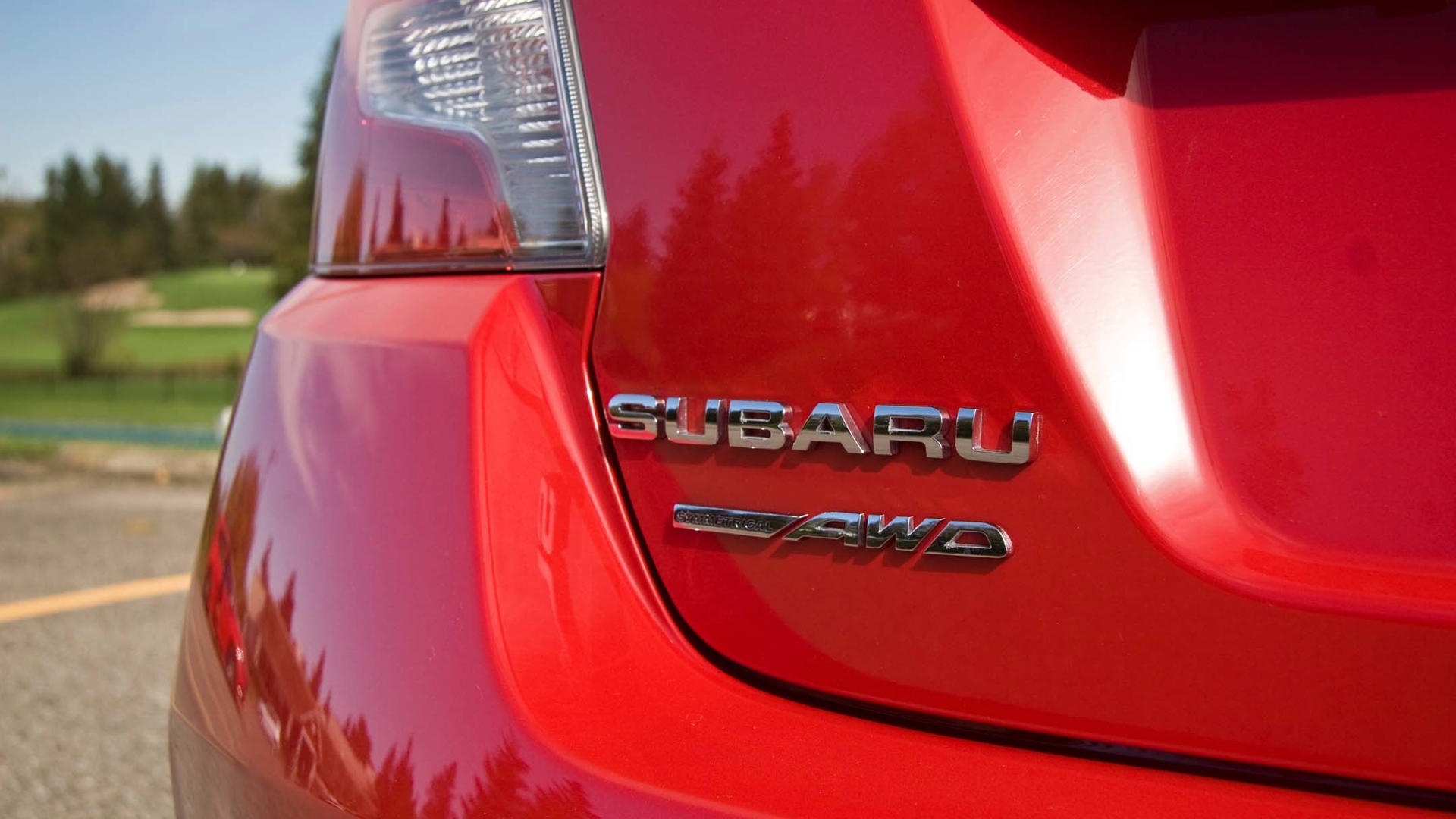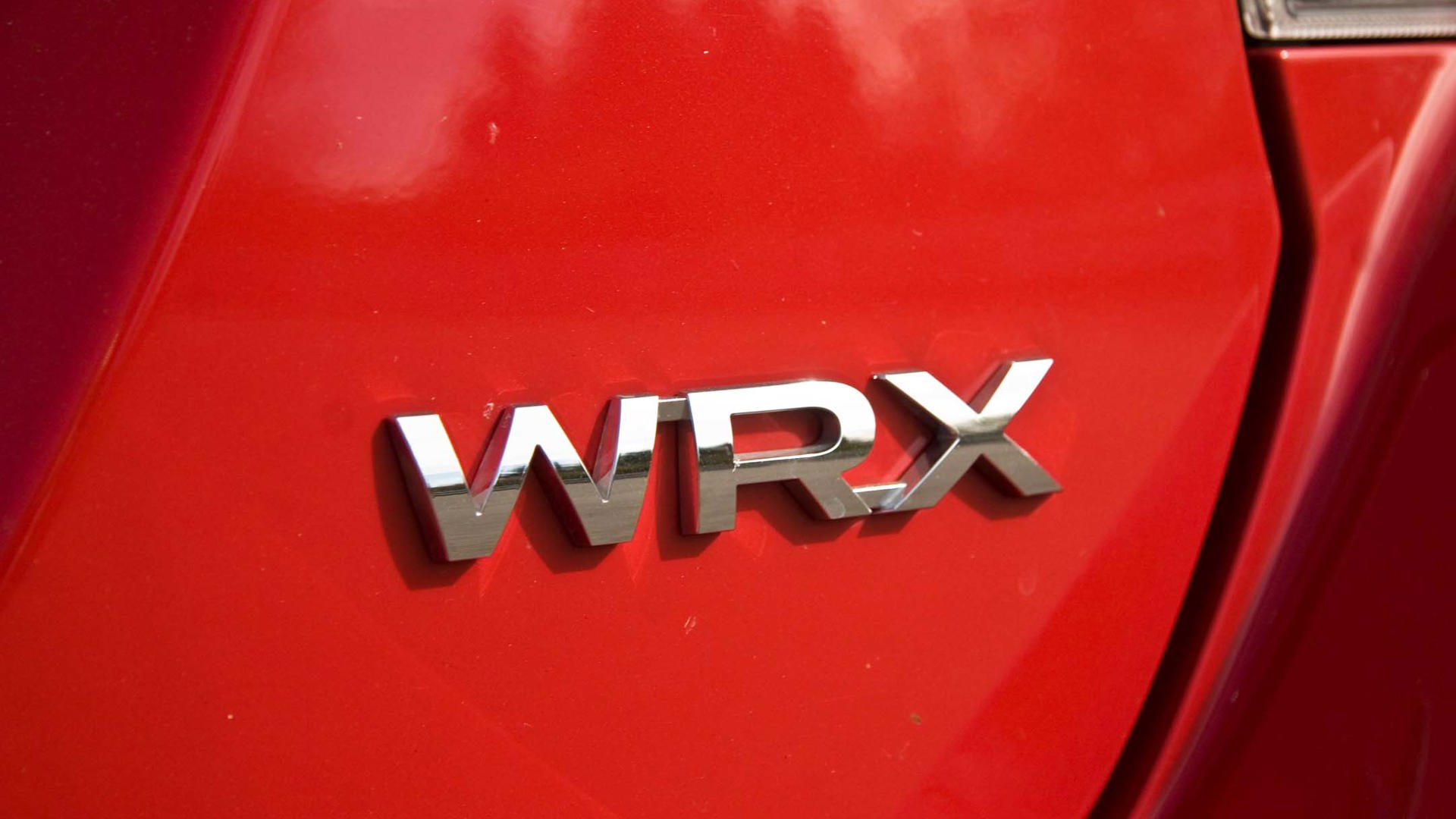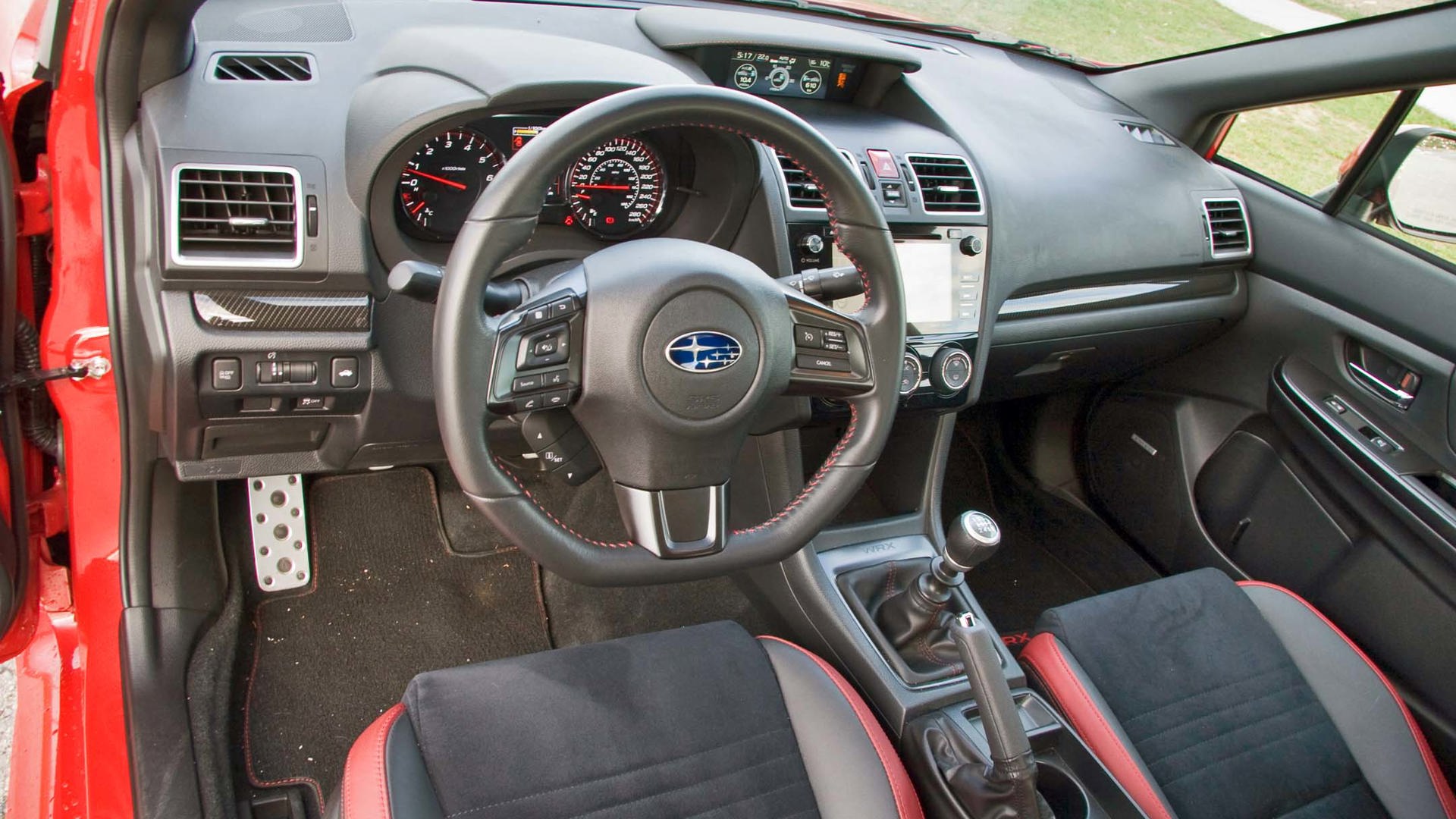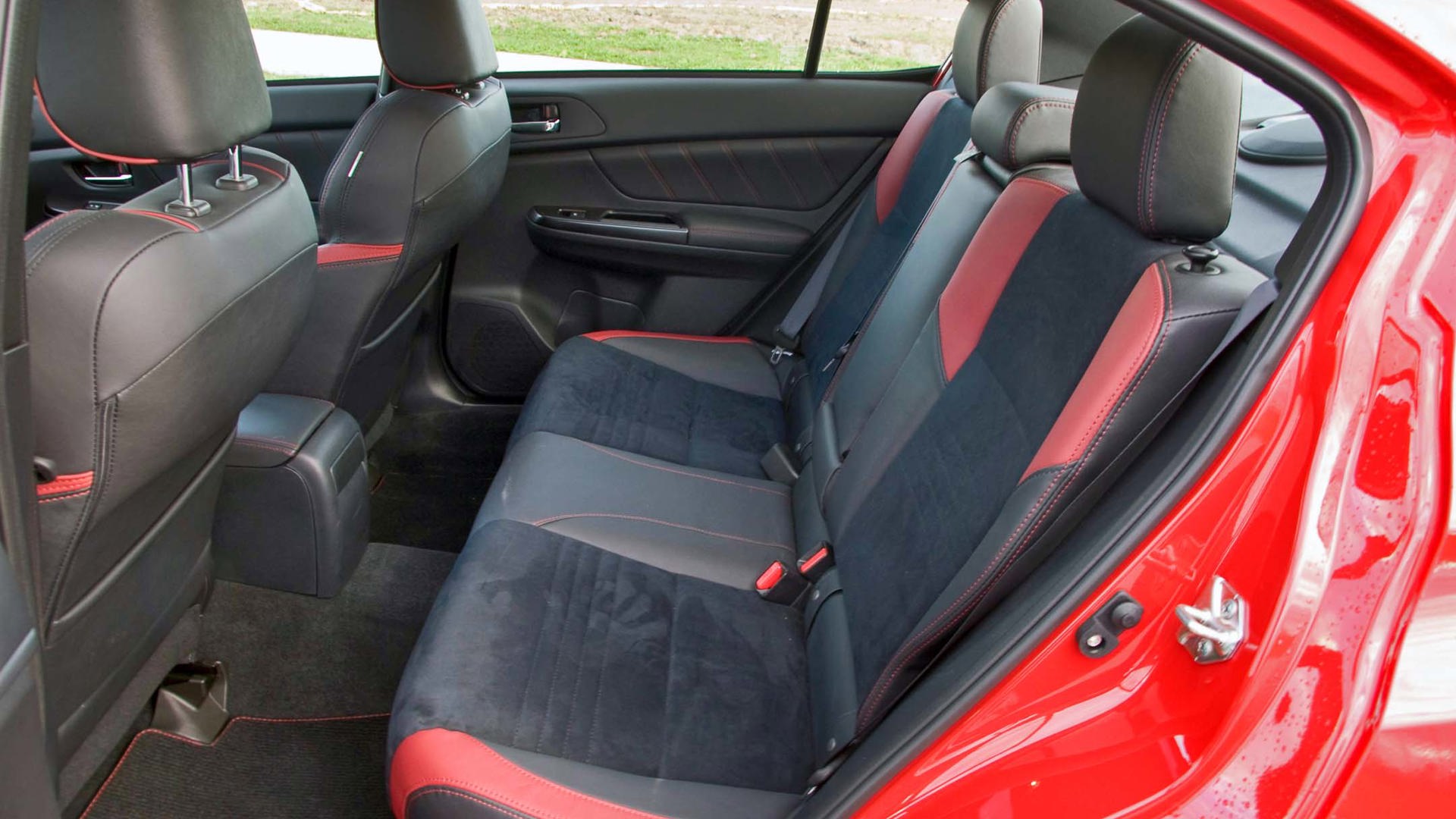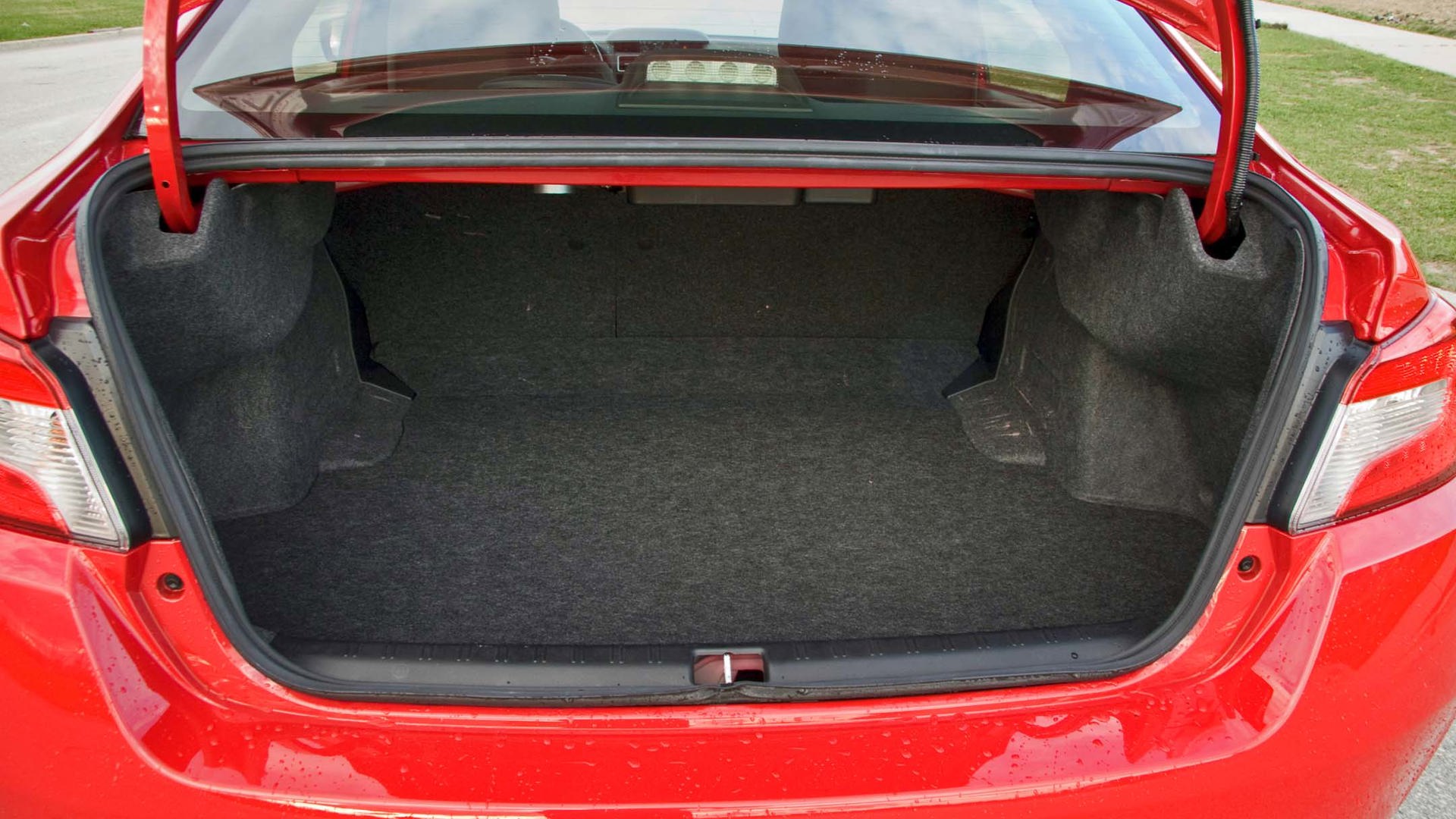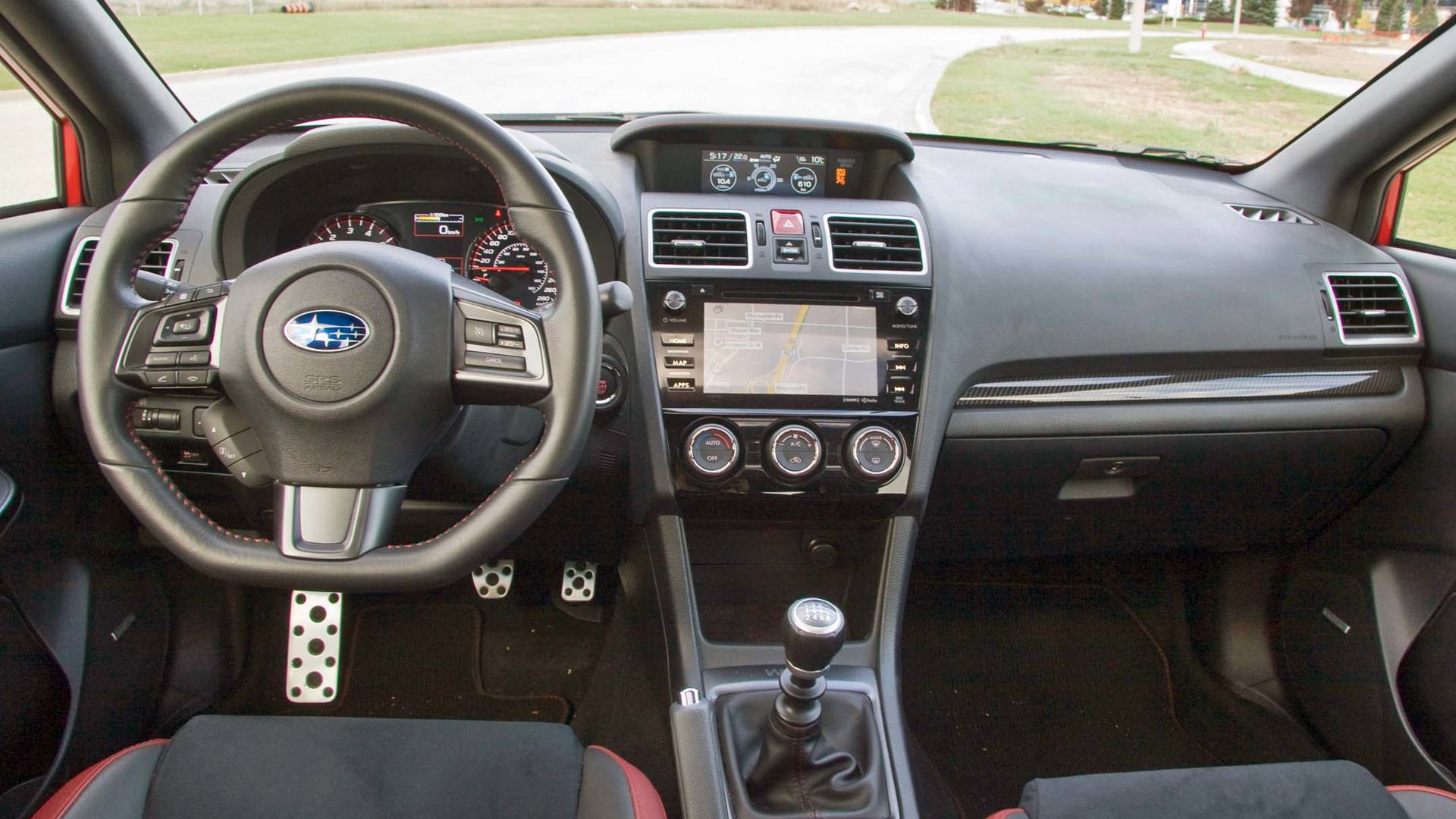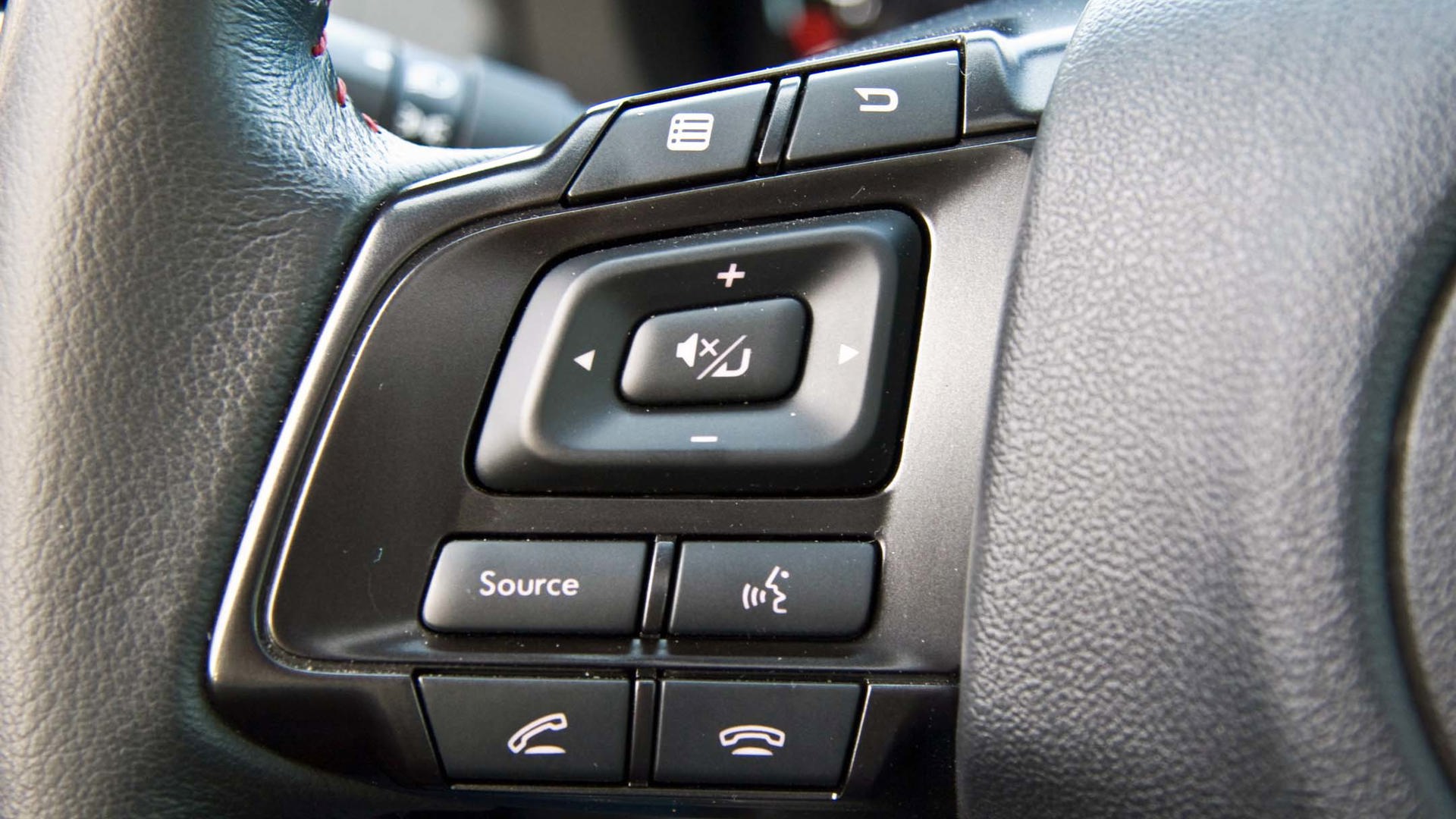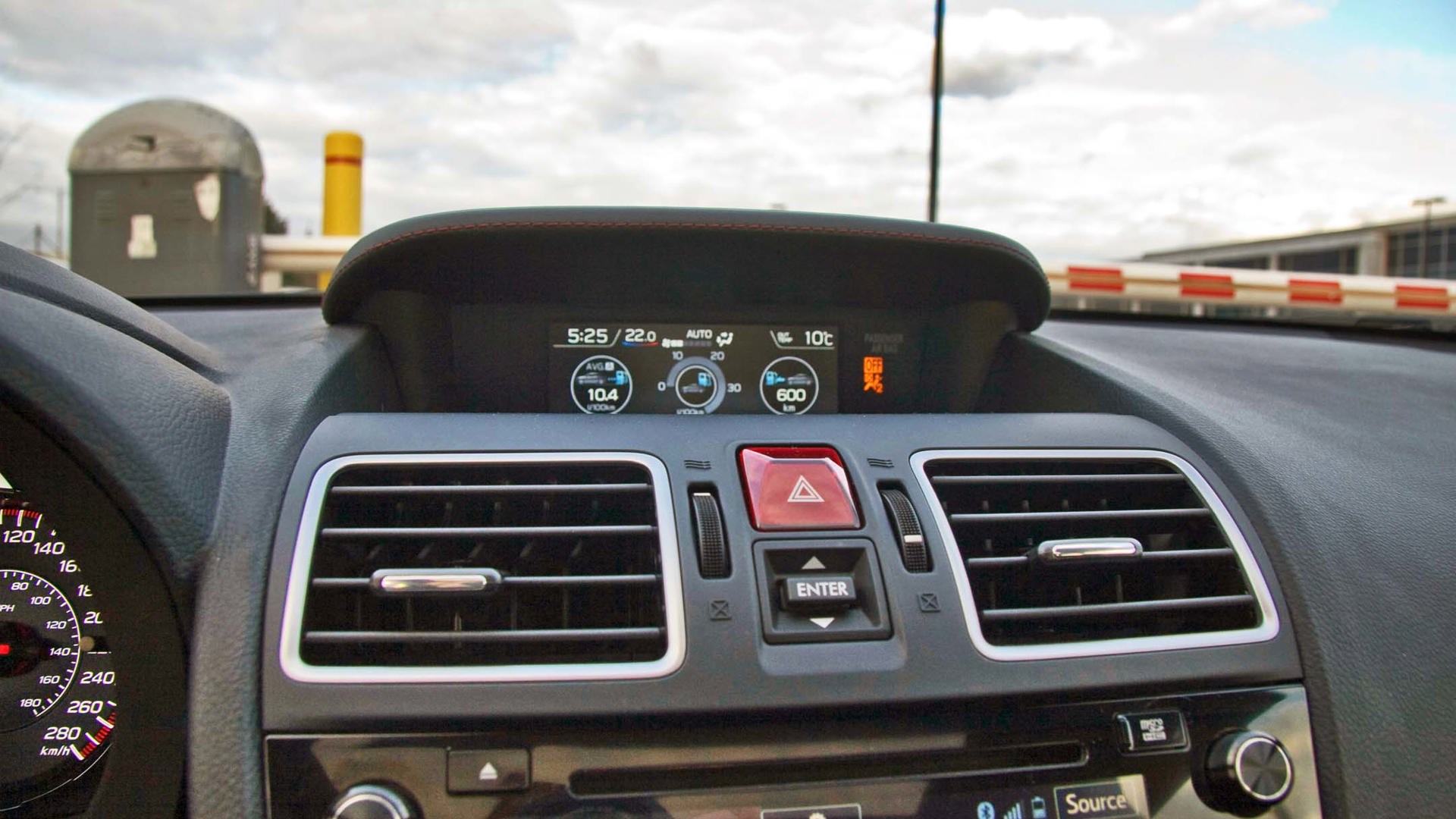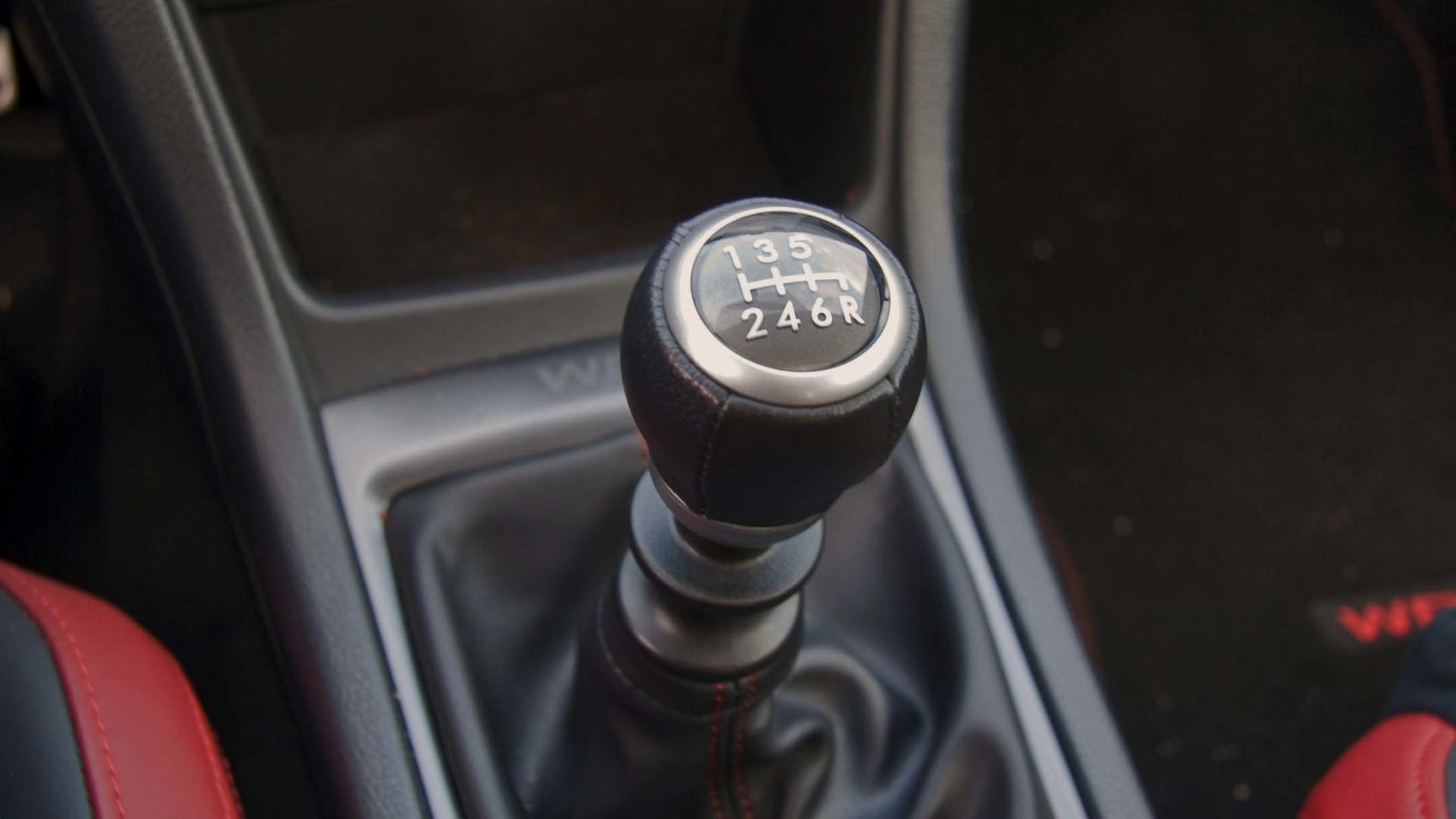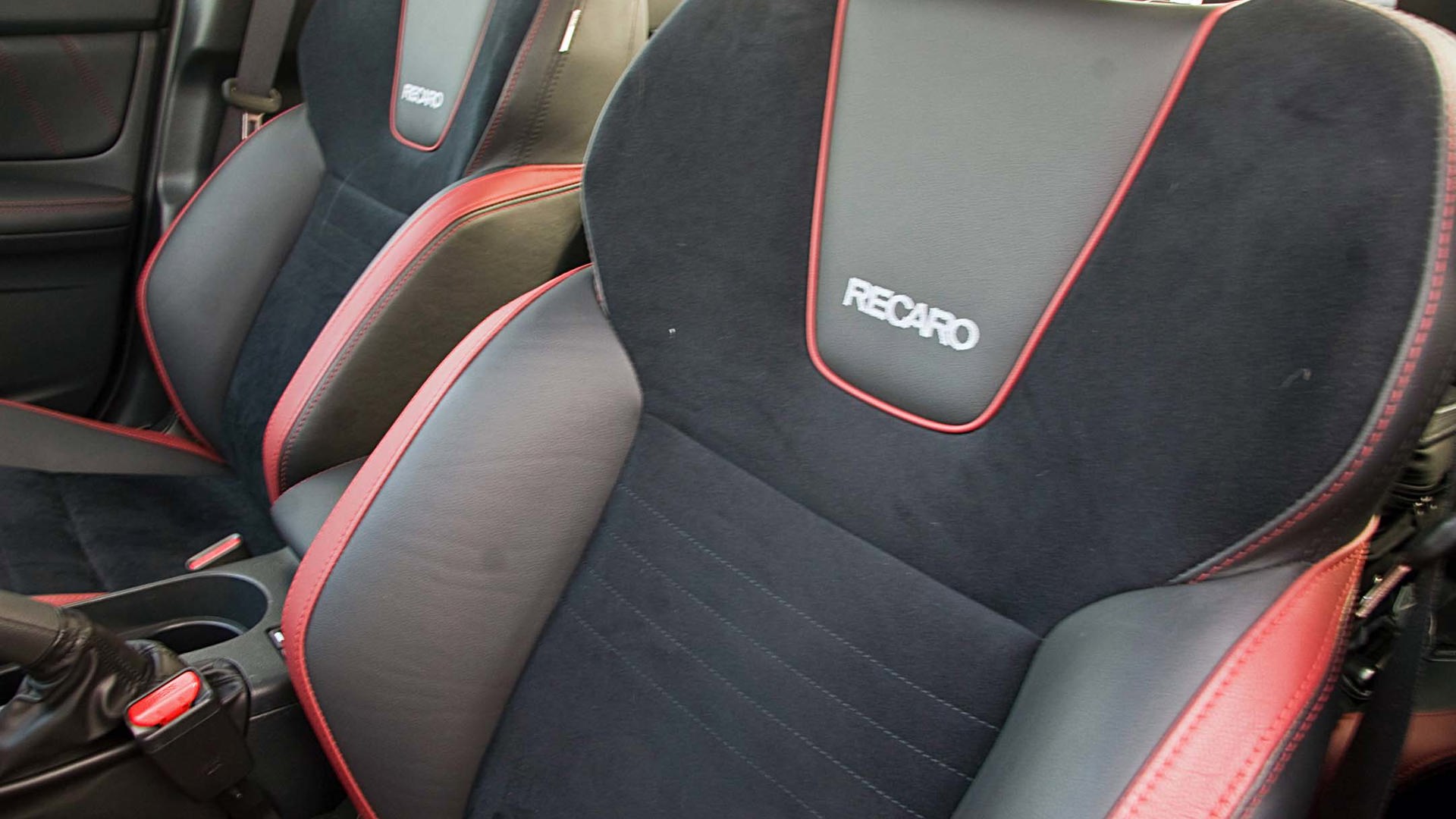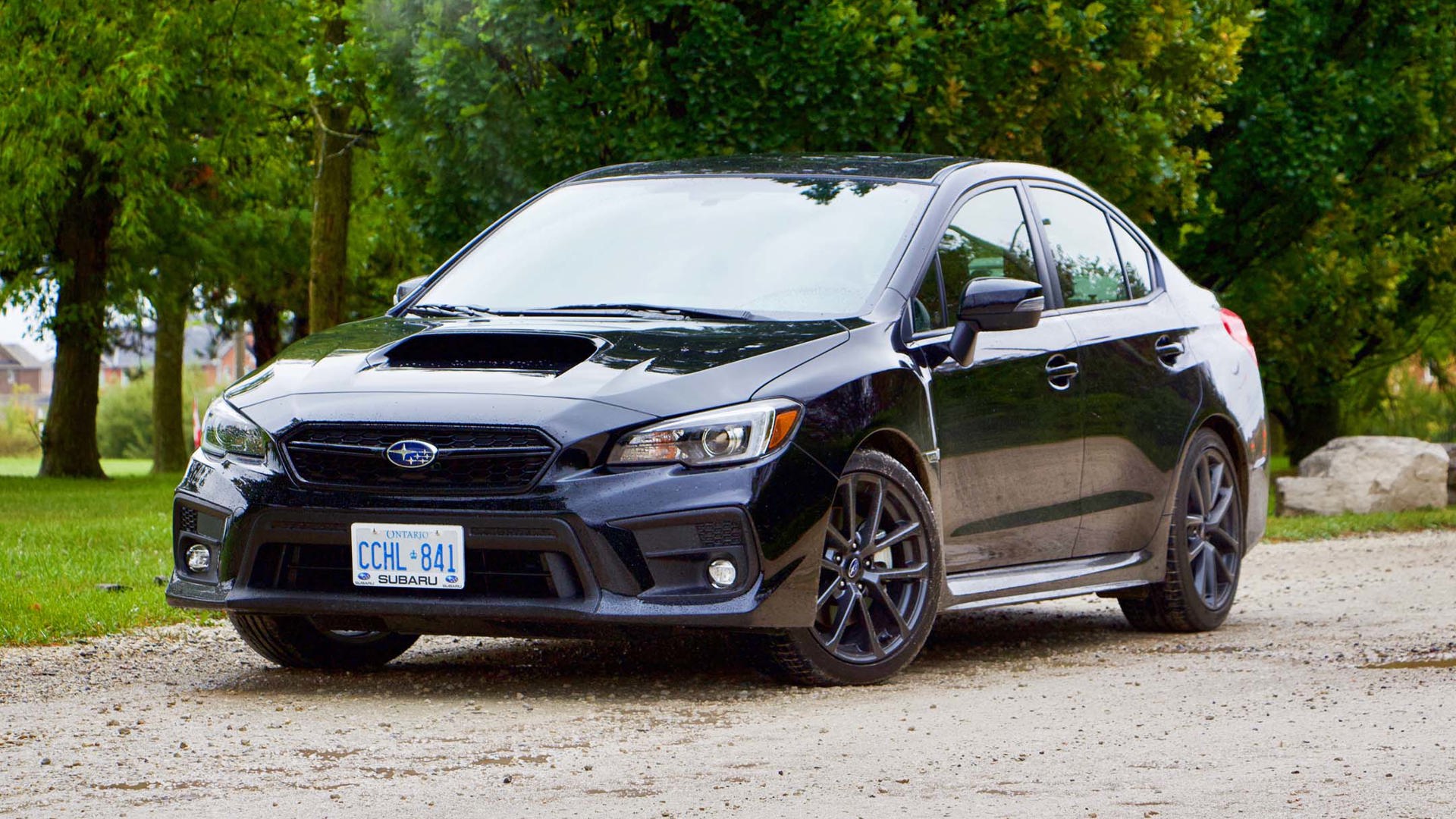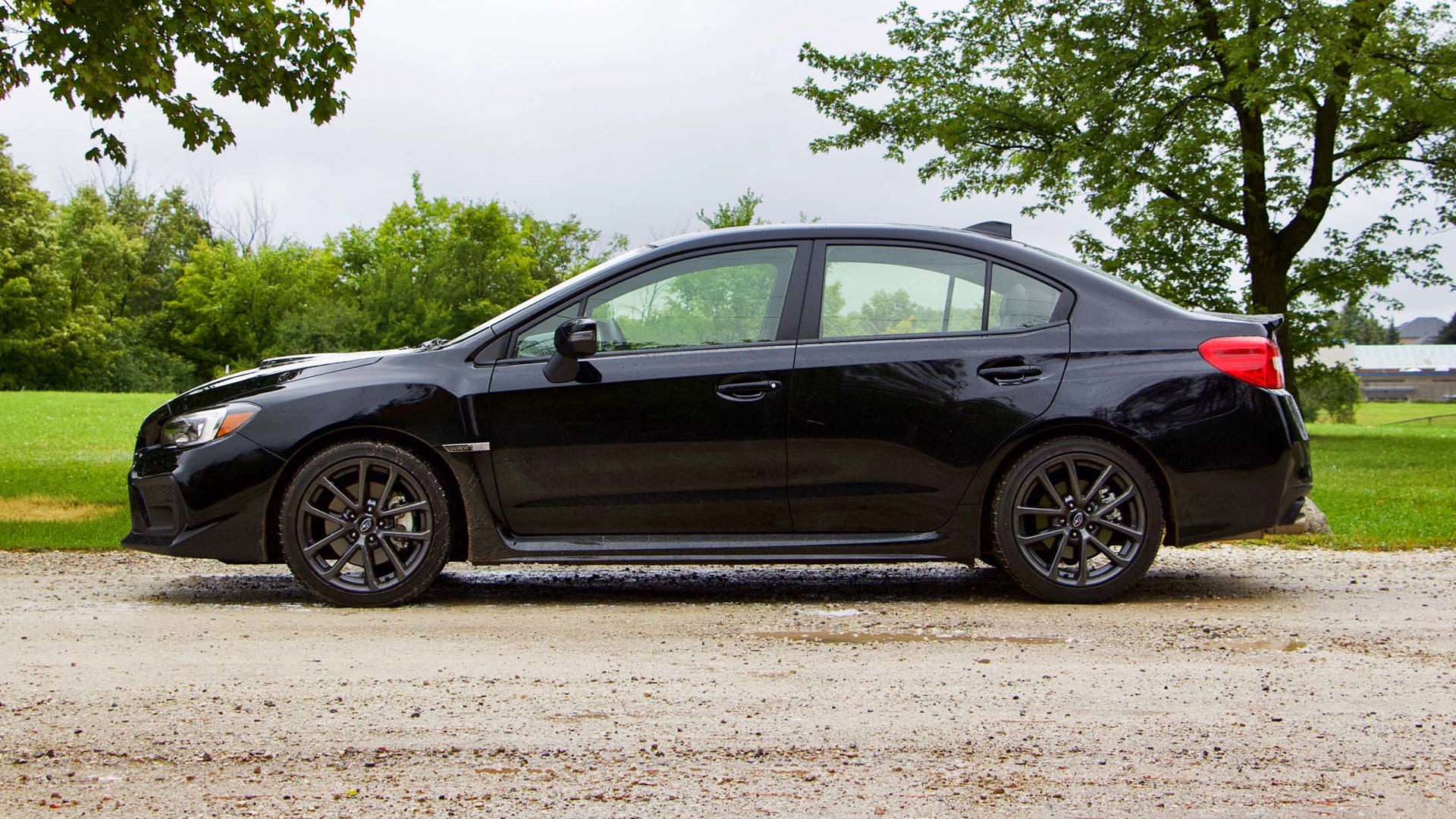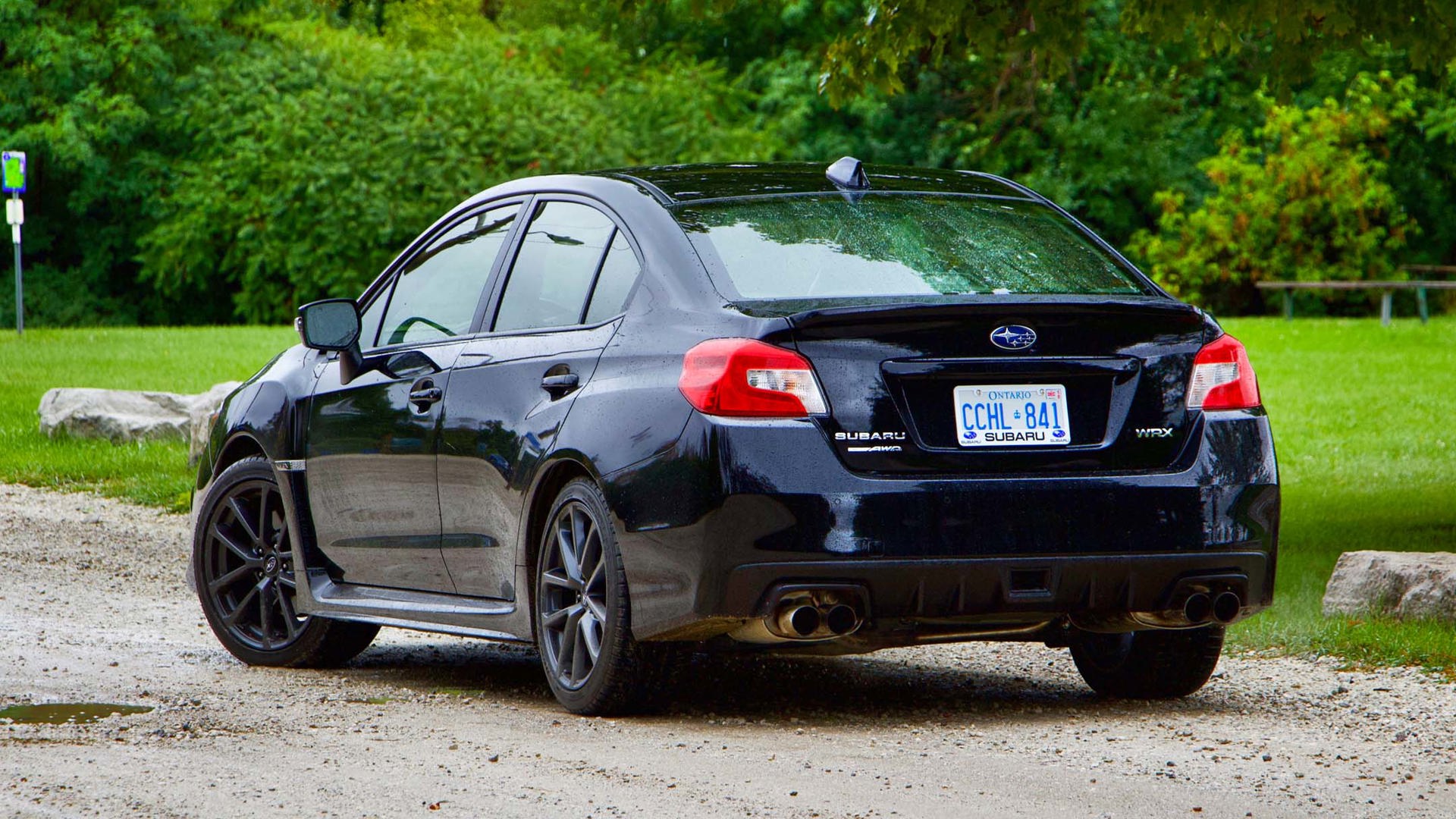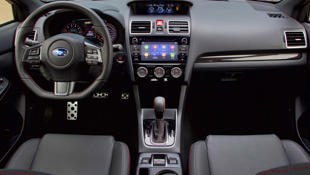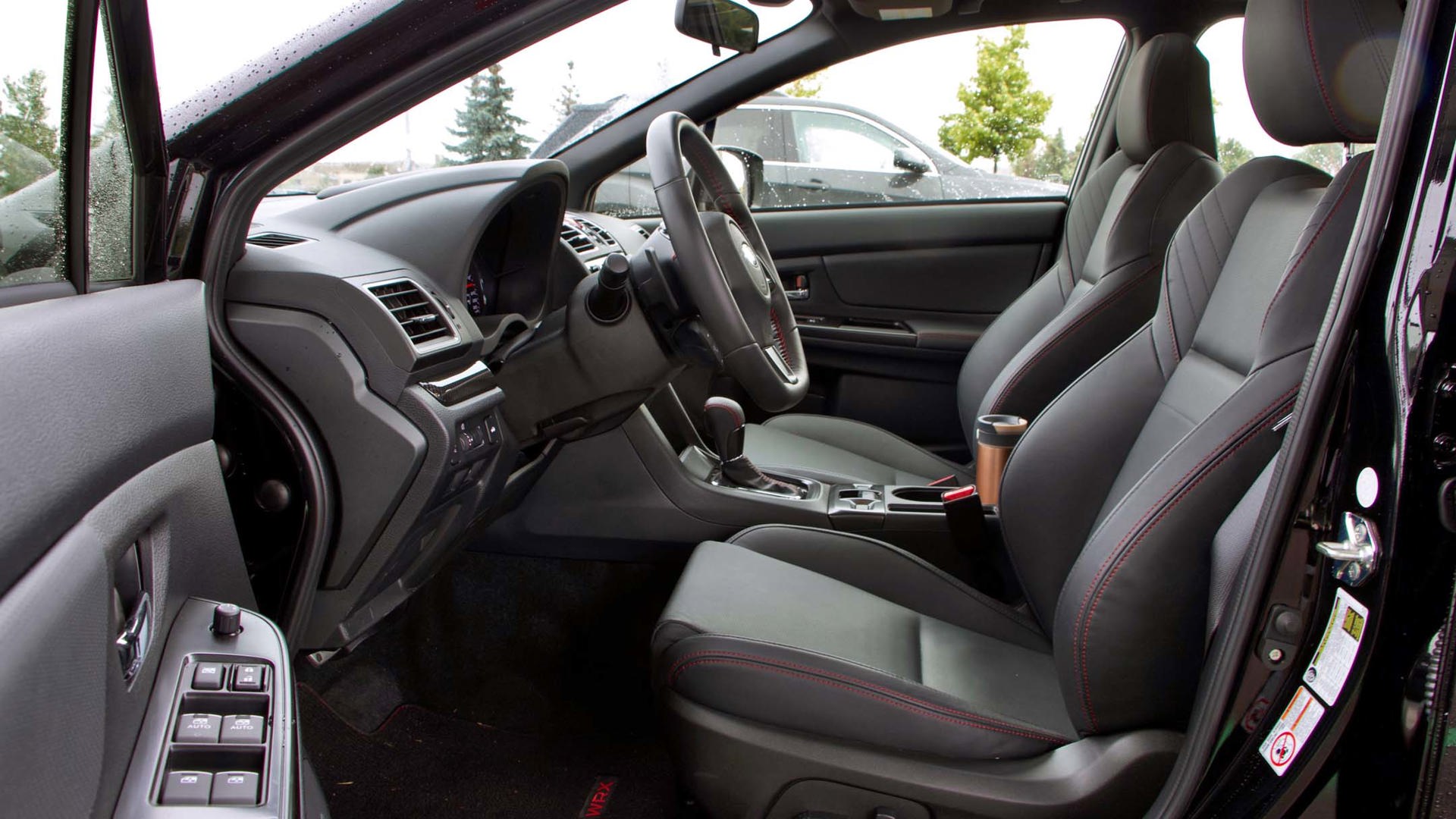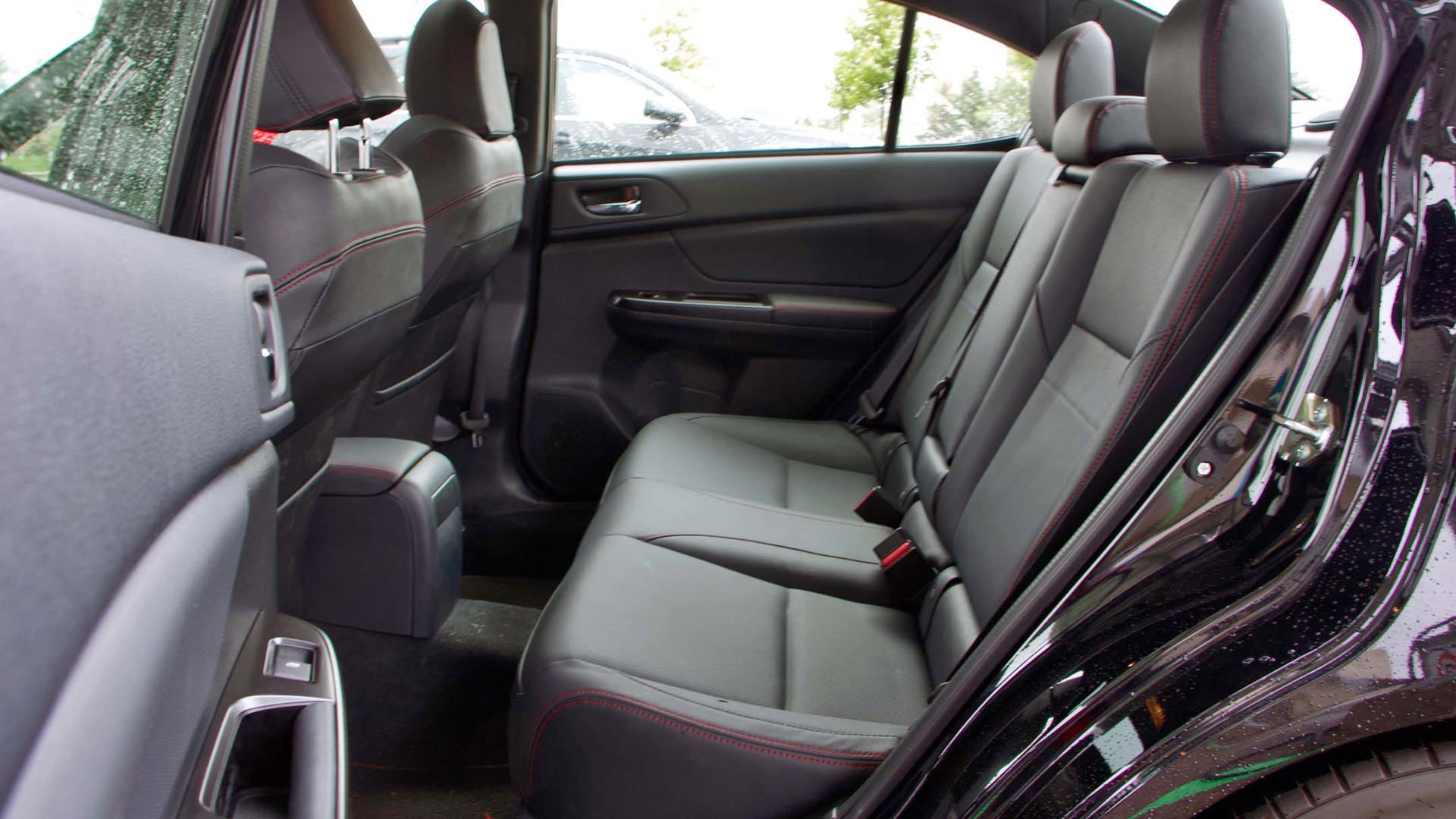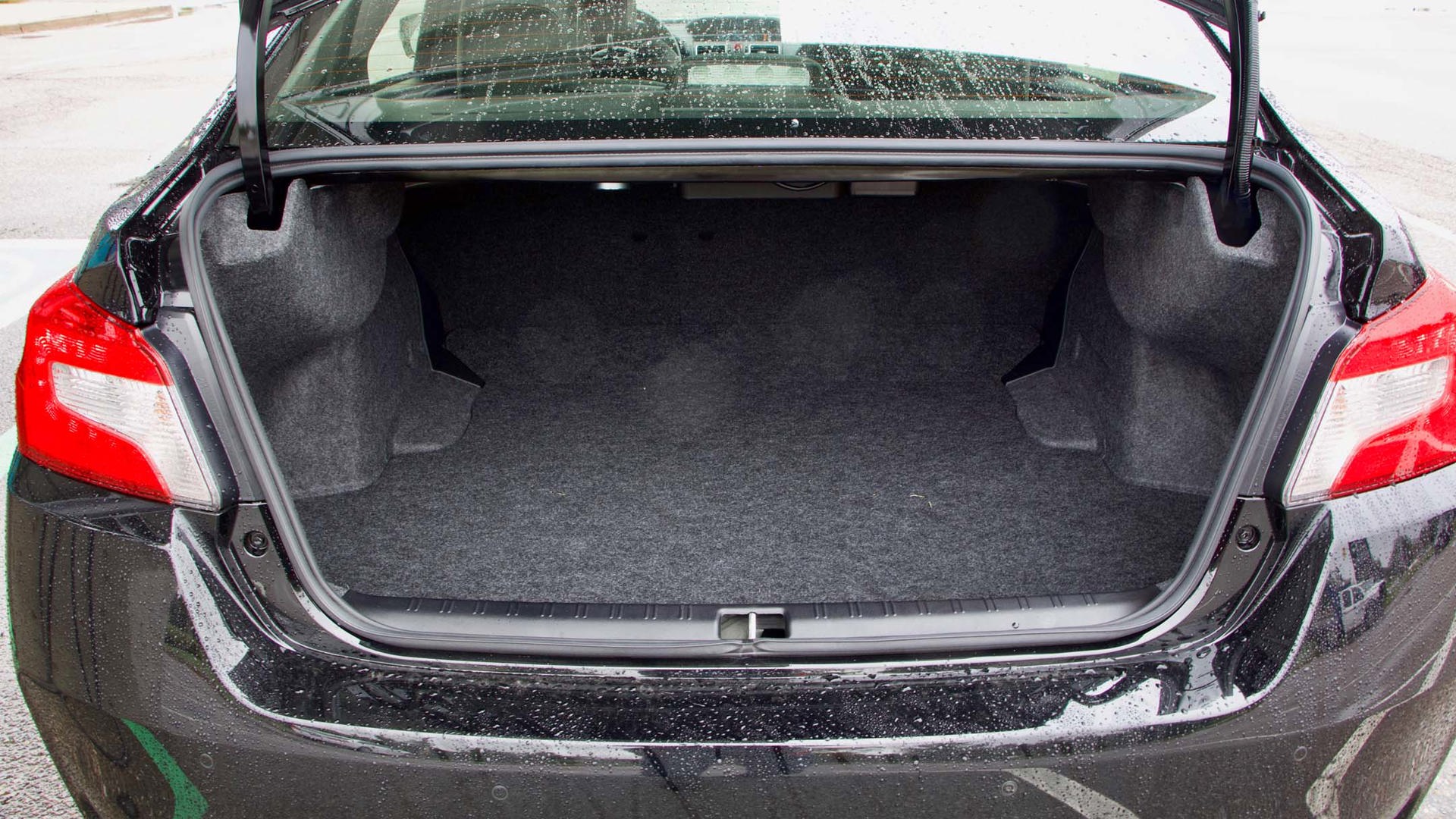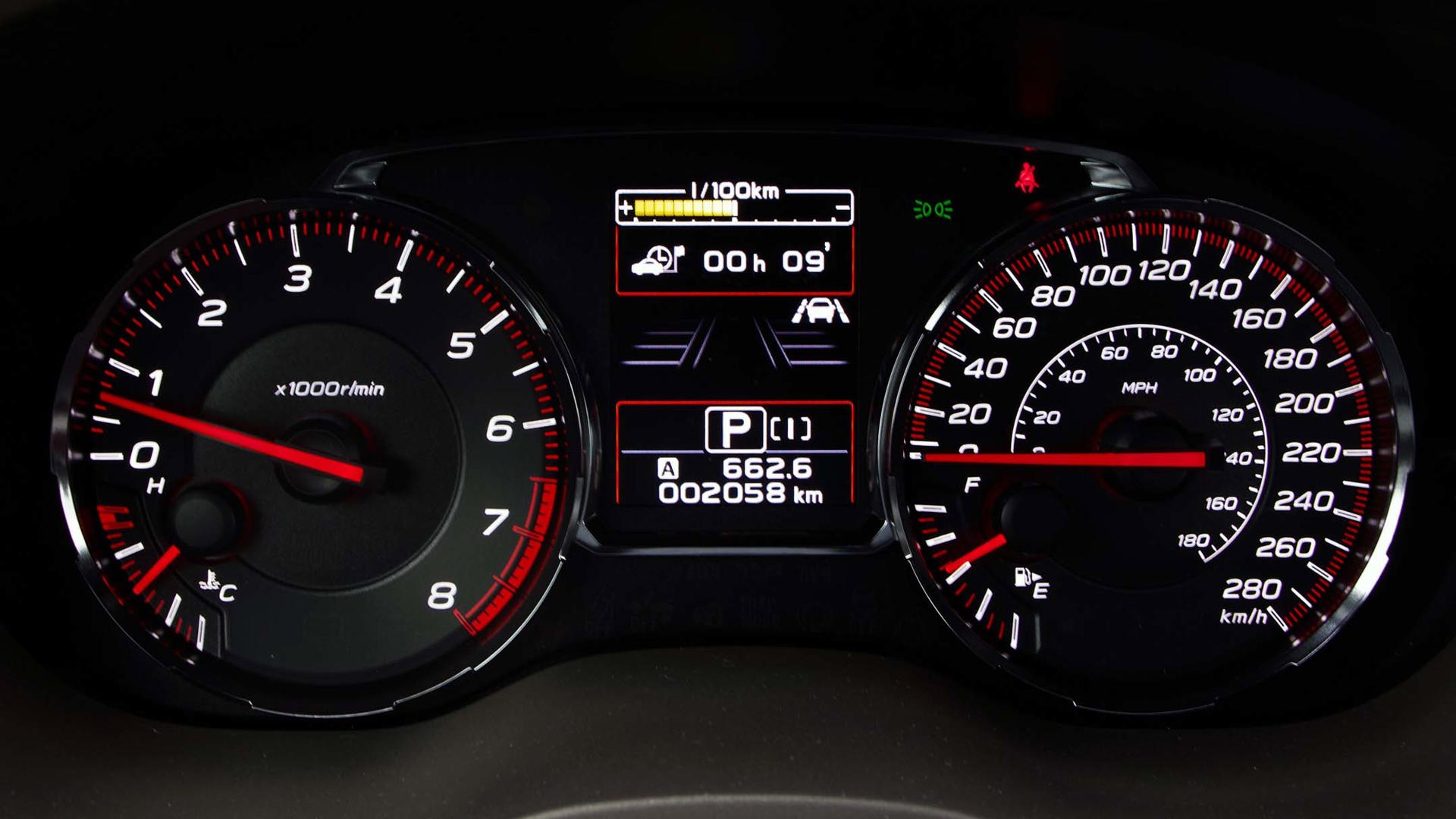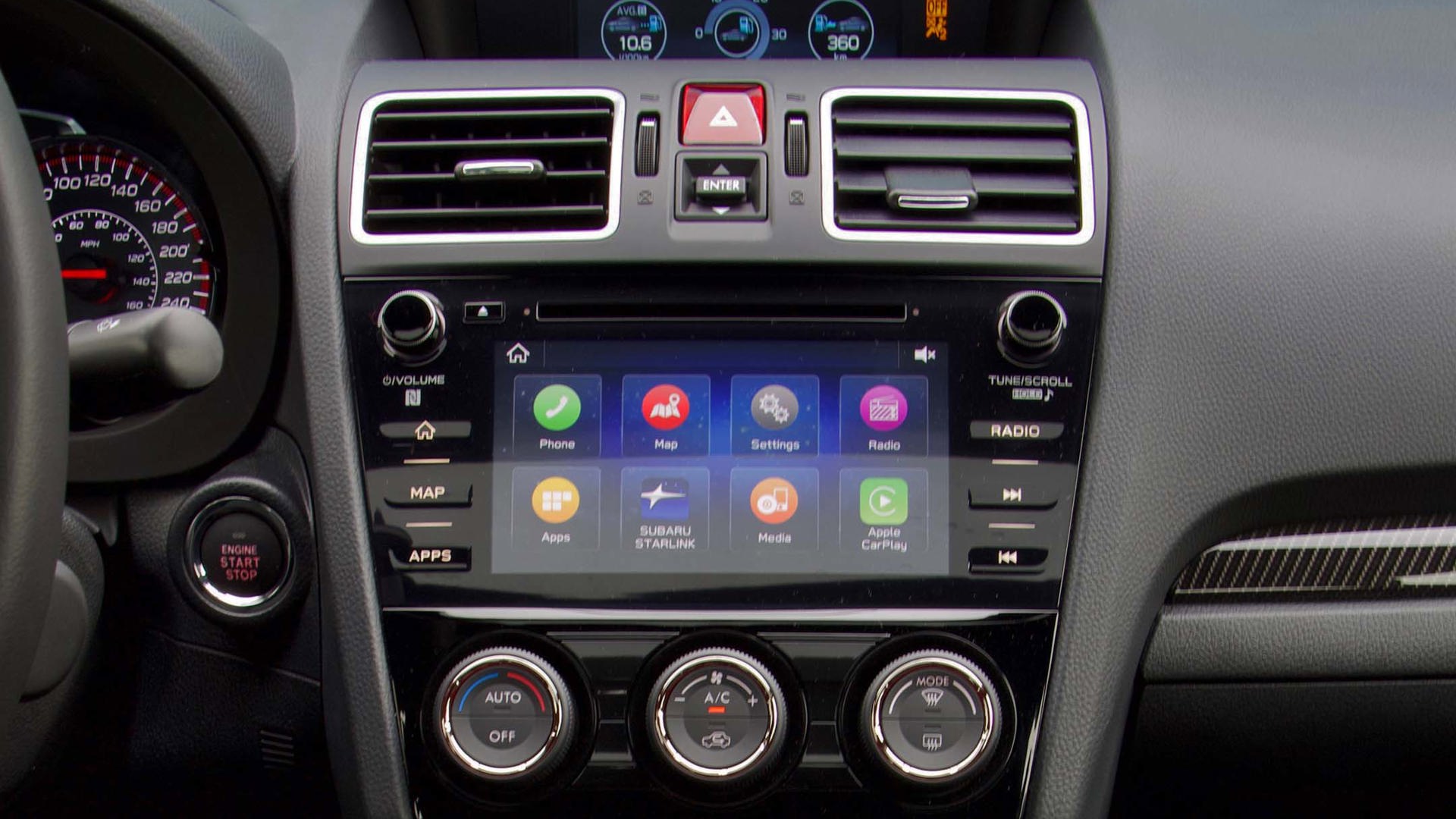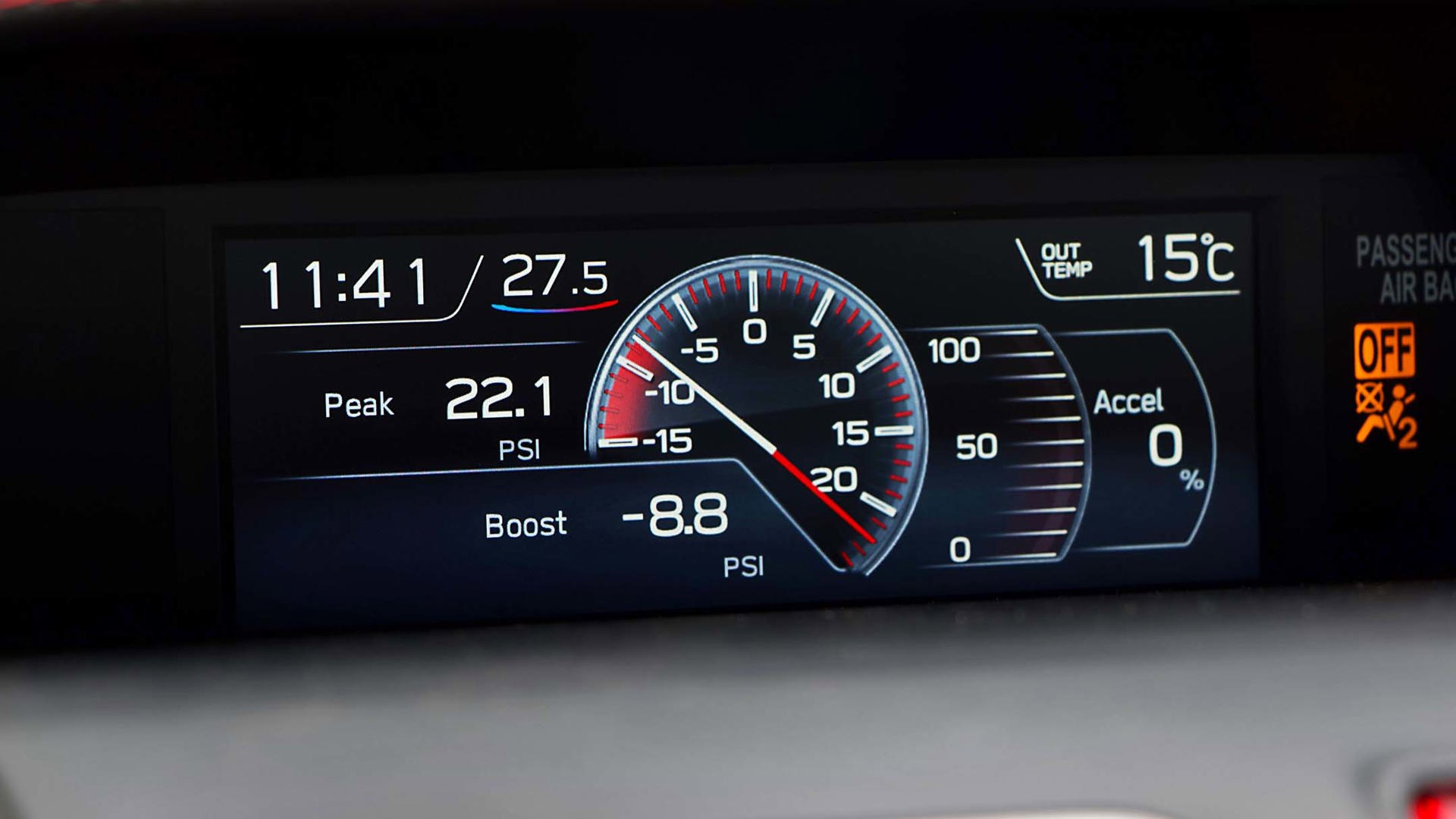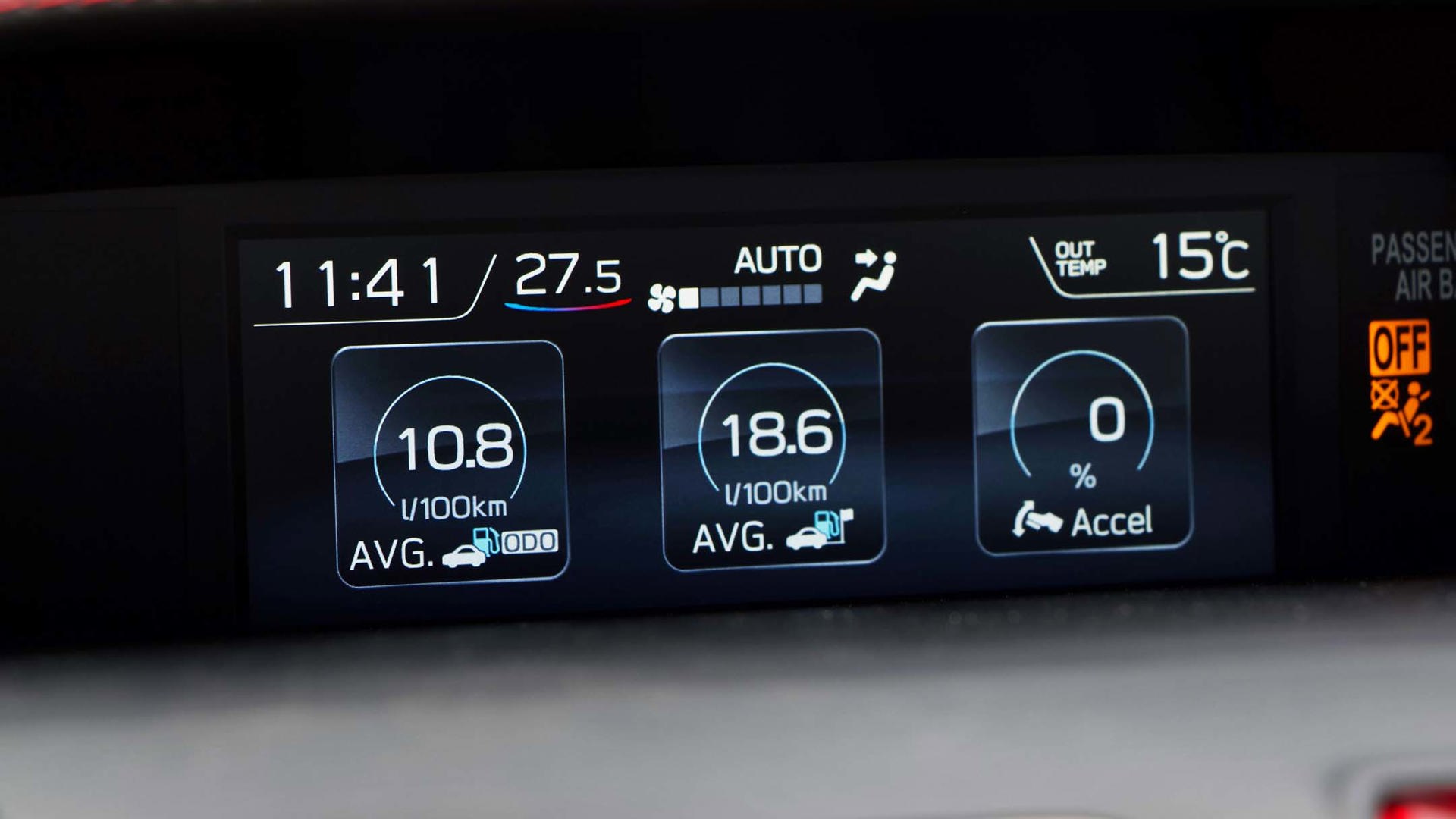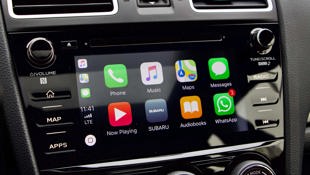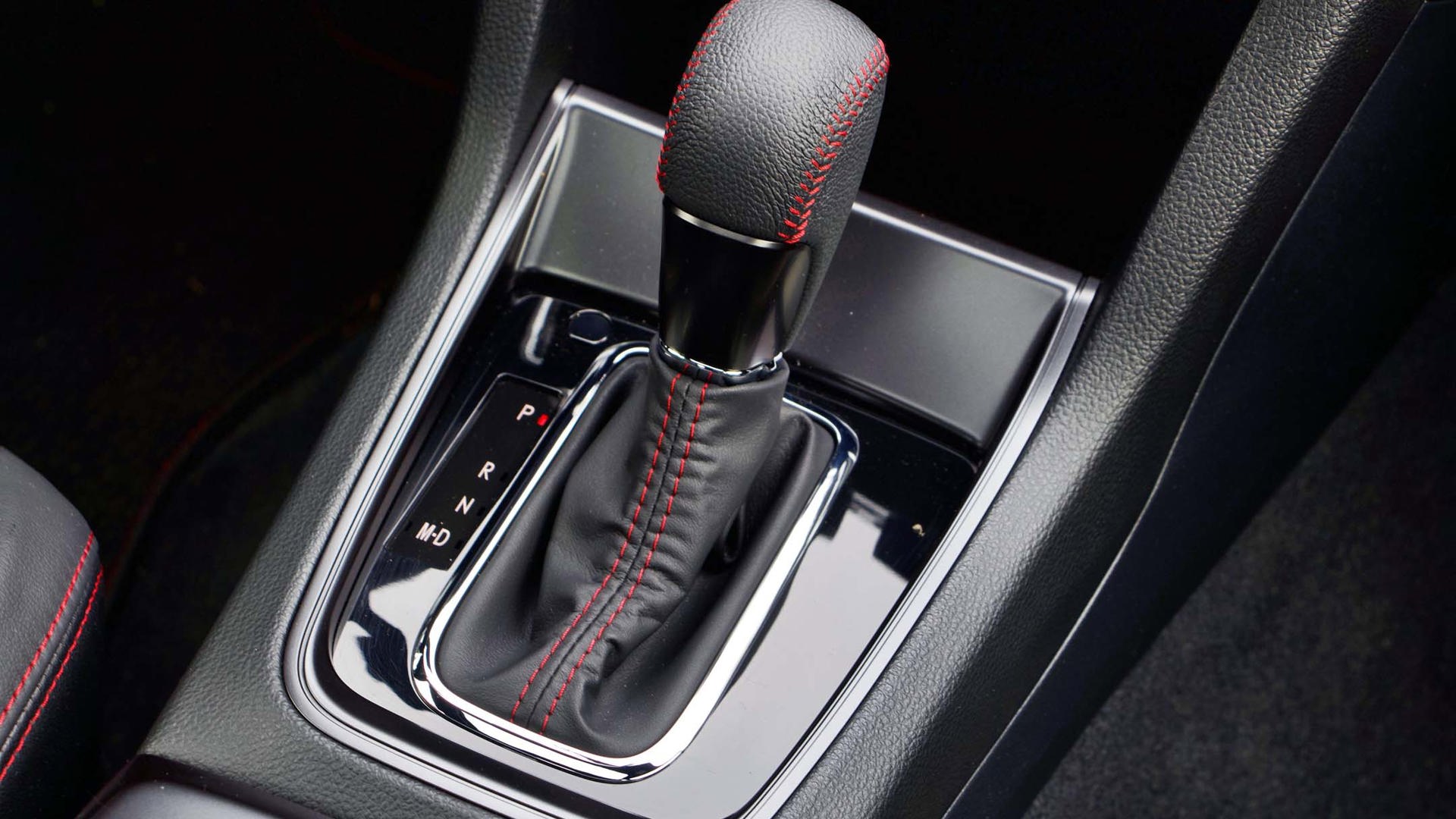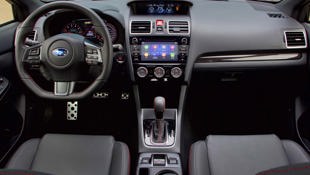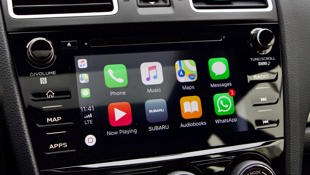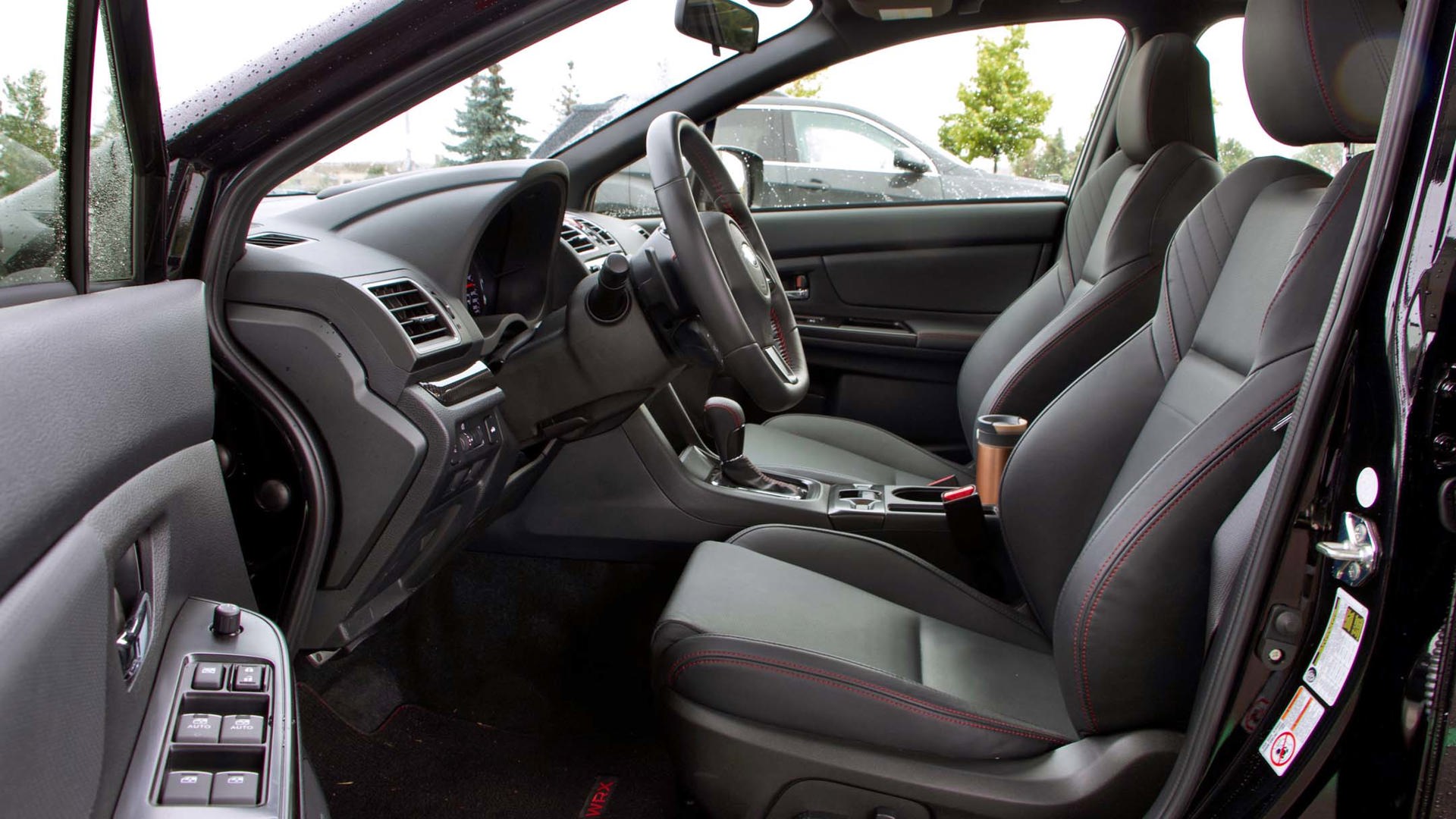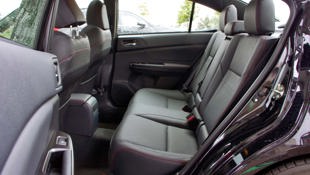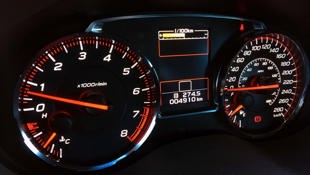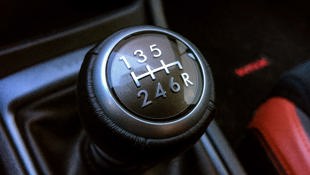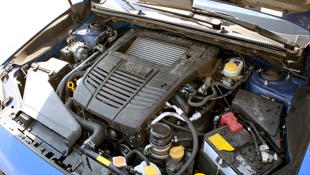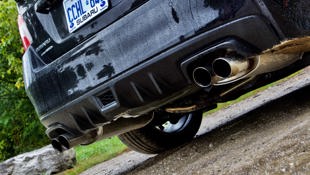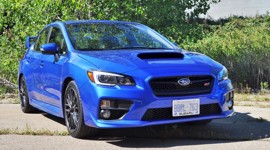With a powerful turbocharged engine and the choice of manual or automatic transmissions, the new-for-2015 Subaru WRX arrived as a sedan as the sole choice but still with standard all-wheel drive (AWD).
Compared with the 2.0L in the Subaru Forester XT of the same year, the WRX’s 268-hp engine featured various enhancements, including specific camshafts and valve springs, while delivering peak torque across a wider rev range. Of the two transmission choices, the standard six-speed manual proved popular as ever in this sport sedan, while the new automatic continuously variable transmission (CVT) arrived with fast, stepped shifting and various drive modes to sharpen responsiveness.
Likewise, two AWD systems were offered, depending on transmission. Manual-equipped models got a “continuous” AWD version that uses a viscous-coupling locking centre differential to distribute torque 50/50 front and rear. In the event of wheelspin, it can transfer more torque to the wheels with the most traction.
Meanwhile, automatic-equipped models use a variable torque distribution system. Instead of a viscous coupler, this AWD configuration employs an electronically controlled hydraulic transfer clutch to manage torque distribution between the axles. By default, the split runs at 45/55 front and back, with that slight rearward bias in place for improved handling. As conditions and driver intentions dictate, the torque split varies on the fly for the best possible performance.
Available features included leather seating, a sunroof, heated seating, and more. Compared to the previous-generation WRX, the 2015 saw torsional rigidity boosted by 41 per cent, while the front stabilizer bar was thicker. Front spring rates were up 39 per cent, with rear spring rates increased by 62 per cent. The front brake rotors were bigger, too.
Choosing the Best Model Year
In 2016, Subaru added safety equipment to the WRX including blind-spot monitoring with rear cross-traffic alert. A new touchscreen interface and multimedia system enhanced the cabin and user experience.
For 2017, the brand’s EyeSight driver-assist tech was made available for the automatic-equipped Sport-tech trim. The following year brought a major update to the WRX, including styling and suspension tweaks, available Recaro seating, a new performance package, and a quieter and more upscale cabin.
The value story improved even further for the 2019 WRX, which got a new infotainment system with Android Auto and Apple CarPlay functionality for the first time this generation. For 2020, the available performance upgrade was improved to include Brembo brake parts – though you’ll need to shop for a WRX Sport-tech with the six-speed to get it.
Caring For Your Turbo Engine
The Subaru WRX is a spicy car with a turbo engine from the factory, making it an appetizing choice for performance enthusiasts looking to tune, chip, and otherwise modify for cheap output gains. Though many WRX drivers around the world enjoy modified cars with no issue, the average budget-minded shopper is best to avoid examples with non-factory engine parts or software, as these can cause problems and wear that aren’t covered by warranty. Here’s some more reading.
Spend some time familiarizing yourself with your new WRX’s owner’s manual. You’ll find important information on maintaining and caring for your car and its high-performing engine.
The WRX should run on 91-octane gasoline, so be sure to set your fuel budget accordingly. Always fill with fresh gas from a reputable retailer. Never add pour-in-tank cleaners or fuel enhancers to the fuel.
Check your owner’s manual for transmission fluid change intervals, especially for automatic-equipped units. Oil change and spark plug change intervals are listed as well, though many owners choose to change these vital components earlier than outlined in the manual.
Check for Misfires
If you experience sluggish or sporadic performance on your test drive, and especially if a pre-purchase diagnostic scan reveals one or more misfire-related codes, be sure to check out this discussion within the owner’s community. In short, several culprits may be at play. You’ll want to confirm that the vehicle in question is running fresh, properly gapped, and factory-recommended spark plugs, a clean fuel filter, a healthy fuel pump, and healthy electrical grounds as a bare minimum. If in doubt, have a technician check the vehicle before you buy, as misfires can also be a sign of more serious trouble.
A rough idle can have similar causes, too. Note that the WRX was subjected to four recalls, one of which involves a faulty fuel pump that could cause similar symptoms.
Pro Tip
If you see a check engine light (CEL), the engine in your WRX is inviting you to have its electronic systems scanned to reveal the cause. Hundreds of problems can illuminate a check engine light, some of which are serious. Diagnosing a CEL requires special equipment, though the process is simple. Never try and fix a CEL by disconnecting and reconnecting the vehicle’s battery.
A Word on EyeSight
The WRX you’re considering may have special cameras mounted behind its windshield that power advanced driver-assist technologies. For these cameras to do their job properly, they have to have a clear view of the road ahead.
Ensuring that the windshield on the WRX you’re considering is free of cracks, chips, or damage, and installing quality wiper blades can be helpful here. Strangely, so can a fresh cabin air filter: if clogged, your WRX will take longer to warm up in the winter and your windshield defroster performance will be reduced, which can affect EyeSight’s performance, too.
Coaxing the Clutch
Assume the clutch in the WRX you’re considering has been left tattered by years of burnouts by previous owners until you’ve got proof to the contrary. Aside from wear, you’ll also want to be on the lookout for other problems reported with faulty factory clutches or throwout bearings wearing prematurely, according to some owners.
This seems most common with 2015 through 2018 units, though most owners have no trouble. When driving the manual-equipped WRX, you’ll want to accelerate at full throttle, up a steep hill, and ideally in a high gear at low revs. This works the clutch hard, and if it’s worn out badly, you may notice it slipping here. Find the steepest hill you can, and travel up it in whichever gear allows you to do about 2,000 rpm with your foot to the floor.
Be on the lookout for unwanted noises, slippage, rev spikes, squeaking, or a gunpowder-like smell. Other signs of a worn clutch or associated components can include difficulty shifting gears, a gear shifter that “bites back” at you, or a noisy throwout bearing.
To check for a noisy throwout bearing, quiet the cabin fully and run the engine at idle. Slowly press and release the clutch several times in neutral. Do this slowly and then quickly. Listen very carefully for a change in sound or the presence or absence of a scraping or grinding noise, perhaps very slight, as you work the clutch. If present, these sounds will seem to come from near your feet and can indicate a worn throwout bearing.
Some owners have had success in having entire clutch assemblies replaced under warranty for this problem.
Safety Ratings
IIHS: Top Safety Pick (2015)
NHTSA: 5/5 Stars (2021)
